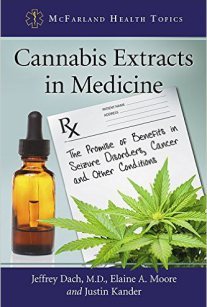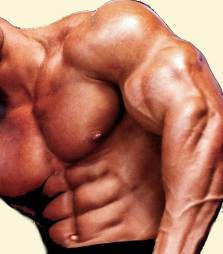Jeffrey Dach's Blog, page 24
November 4, 2015
Cannabis Extracts in Medicine by Jeffrey Dach, Elaine Moore, Justin Kander
Cannabis Extracts in Medicine: The Promise of Benefits in Seizure Disorders, Cancer and Other Conditions (Mcfarland Health Topics)
As of December 2014, medicinal cannabis is legal in 23 states where news and medical journals report success stories of people recovering from diverse medical conditions such as epilepsy, cancer and chronic pain.
In states where cannabis remains illegal, users and providers risk arrest and imprisonment. While the United States government has restricted cannabis medical research, advances have been made in Israel, Spain and Italy. One such breakthrough was the discovery of the endocannabinoid system in the brain and immune system. Endogenous cannabinoids are mimicked by THC and CBD, cannabinoids found in the cannabis plant, thus accounting for its medicinal effects. Focusing on the biochemical properties, medical benefits and psychological effects of cannabinoids, this book provides an overview of anecdotal case reports, animal studies and clinical trials proposing cannabis for seizure disorder, cancer, chronic pain and other medical conditions.
Click Here to Buy Book on Amazon.
About the Authors
Jeffrey Dach, M.D., is a practicing physician in Davie, Florida. He serves on the editorial board of Alternative Therapies in Health and Medicine.
Elaine A. Moore has worked in hospital laboratories for more than 30 years, primarily in immunohematology and toxicology. She is a freelance medical writer and laboratory consultant. She lives in Sedalia, Colorado.
Justin Kander is the research and development coordinator for Aunt Zelda’s, a provider of medicinal cannabis in California. Kander has presented at cannabis conferences in Australia, Florida and Costa Rica. He lives in Bodega Bay, California.
Articles with related interest:
How Does Cannabis Kill Cancer Cells Part One
How Does Cannabis Kill Cancer Cells Part Two
Cannabis Oil for Acute Leukemia
Cannabis Oil for Epilepsy Part One
Cannabis Oil for Epilepsy Part Two
Cannabis Oil for Brain Tumor Remission
Pediatric Cancer and Cannabis Oil
Medical Cannabis States Have Less Mortality from Opiates
Jeffrey Dach MD
7450 Griffin Road Suite 190
Davie, Fl 33314
954-792-4663
www.jeffreydachmd.com
http://www.drdach.com
http://www.naturalmedicine101.com
http://www.bioidenticalhormones101.com
http://www.truemedmd.com
For Disclaimer: click here.
The reader is advised to discuss the comments on these pages with his/her personal physicians and to only act upon the advice of his/her personal physician. Also note that concerning an answer which appears as an electronically posted question, I am NOT creating a physician â patient relationship. Although identities will remain confidential as much as possible, as I can not control the media, I can not take responsibility for any breaches of confidentiality that may occur.
Copyright (c) 2015 Jeffrey Dach MD All Rights Reserved. This article may be reproduced on the internet without permission, provided there is a link to this page and proper credit is given.
FAIR USE NOTICE: This site contains copyrighted material the use of which has not always been specifically authorized by the copyright owner. We are making such material available in our efforts to advance understanding of issues of significance. We believe this constitutes a âfair useâ of any such copyrighted material as provided for in section 107 of the US Copyright Law. In accordance with Title 17 U.S.C. Section 107, the material on this site is distributed without profit to those who have expressed a prior interest in receiving the included information for research and educational purposes.
Serving Areas of: Hollywood, Aventura, Miami, Fort Lauderdale, Pembroke Pines, Miramar, Davie, Coral Springs, Cooper City, Sunshine Ranches, Hallandale, Surfside, Miami Beach, Sunny Isles, Normandy Isles, Coral Gables, Hialeah, Golden Beach ,Kendall,sunrise, coral springs, parkland,pompano, boca raton, palm beach, weston, dania beach, tamarac, oakland park, boynton beach, delray,lake worth,wellington,plantation.
The post Cannabis Extracts in Medicine by Jeffrey Dach, Elaine Moore, Justin Kander appeared first on Jeffrey Dach MD .
October 23, 2015
Could Leaky Gut Cause Post Partum Depression ?
 Could Leaky Gut Cause Post Partum Depression ?
Could Leaky Gut Cause Post Partum Depression ?
by Jeffrey Dach MD
Cathy is a young mother still breast feeding a healthy newborn. Cathy takes natural thyroid pills, selenium and Vitamin D for her Hashimotos’ auto-immune thyroid disease, which is doing well. However, she now calls into the office reporting gastrointestinal symptoms of bloating, gas, abdominal discomfort, as well as “the Blues” a sort of depressed feeling. Left Image: Mother and Child 1904 by Janis RozentÄls Courtesy of Wikimedia Commons.
Doing Some Reading on the Internet
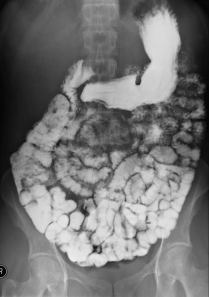 Cathy has been doing some reading on the internet and decided she has “Leaky Gut”, and she asks me to order a Leaky Gut test, the (Lactulose/Mannitol) (L/M) test. This is an easy home test kit. The patient drinks a solution of two sugars, lactulose, and mannitol, and then collects a urine sample to send into the lab. Mannitol is small molecule easily absorbed into the blood stream, whereas lactulose is a large one, and cannot enter the blood stream unless the gut barrier is porous, ie a Leaky gut.
Cathy has been doing some reading on the internet and decided she has “Leaky Gut”, and she asks me to order a Leaky Gut test, the (Lactulose/Mannitol) (L/M) test. This is an easy home test kit. The patient drinks a solution of two sugars, lactulose, and mannitol, and then collects a urine sample to send into the lab. Mannitol is small molecule easily absorbed into the blood stream, whereas lactulose is a large one, and cannot enter the blood stream unless the gut barrier is porous, ie a Leaky gut.
The lab measures the two sugars in the urine sample and provides a ratio which reveals if a “Leaky Gut” is present. Left Image; Small Bowel Barium Xray courtesy of Wikimedia commons.
Doing A Leaky Gut Test with a Home Kit
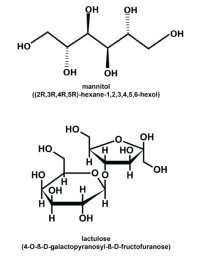 Cathy received the kit and did her test. Her L/M ratio was severely abnormal indicating a positive test for “Leaky Gut”. On the phone, Cathy says she is sure everything started the last month of her pregnancy. I replied, “That’s ridiculous. I never heard of pregnancy causing Leaky Gut.” I said, “wait a minute, let’s look it up”, turning to my keyboard on the desk, I typed in the key words to do a medline literature search. The following article appeared: Is a leaky gut involved in the pathogenesis of intrahepatic cholestasis of pregnancy? (1)Â
Cathy received the kit and did her test. Her L/M ratio was severely abnormal indicating a positive test for “Leaky Gut”. On the phone, Cathy says she is sure everything started the last month of her pregnancy. I replied, “That’s ridiculous. I never heard of pregnancy causing Leaky Gut.” I said, “wait a minute, let’s look it up”, turning to my keyboard on the desk, I typed in the key words to do a medline literature search. The following article appeared: Is a leaky gut involved in the pathogenesis of intrahepatic cholestasis of pregnancy? (1)Â
Left Image: Schematic of lactulose and mannitol molecules courtesy of SEP SCience
Intra-Hepatic Cholestasis of Pregnancy
Dr Reyes found that pregnant women who develop intrahepatic cholestasis of pregnancy may also have “Leaky Gut” with elevated cytokine levels and translocated LPS. Abnormal test results may persist two years after delivery.
Cathy Was Right After All
Intrahepatic cholestasis of pregnancy is associated with elevated liver function tests, and patients may report pruritis (itchy skin) from elevated bilirubin. In retrospect, Cathy’s labs during the last trimester of pregnancy showed transient elevation of her Liver Enzyme which returned to normal after deliver. It looks like Cathy was right after all. Her pregnancy caused her leaky gut and post-partum depression.
Post-Partum Depression and Leaky Gut

Painting by Vincent van Gogh (1853â1890) entitled “At Eternity’s Gate” May 1890, oil on canvas in the Kröller-Müller Museum. Courtesy of wikimedia commons.
Post Partum Depression is quite common, affecting 5-70% of women depending on study cited. The etiology is not well understood and various proposed treatments are not very effective. Mainstream medical docs are quick to prescribe SSRI antidepressants for these women, failing to consider “Leaky Gut” and associated brain inflammation in many of these patients.
How About Treatments for Intra-Hepatic Cholestasis of Pregnancy?
The etiology is not well understood. Current medical thinking is that massive hormone production of pregnancy overwhelms the capacity of the liver to keep up with its role detoxifying the hormones, especially if SNP’s or mutations are present which may impair the liver from the beginning.
Natural treatments for intra-hepatic cholestasis of pregnancy include SAM-e (S-adenysyl methione), also useful for reversing the hepatic perturbations induced by synthetic hormones in birth control pills. Left Image: Painting by Vincent van Gogh (1853â1890) entitled âAt Eternity’s Gateâ May 1890, oil on canvas in the Kröller-Müller Museum. Courtesy of wikimedia commons.
The Inflammatory Model of Depression
Michael Maes and others have proposed Leaky Gut, translocated LPS and elevated cytokines as an etiology for brain inflammation and depression. Could this same mechanism be the culprit in Post Partum Depression ?
Leaky Gut is rarely studied in the patient with post partum depression. Home test kits for L/M ratios, and blood tests for LPS antibodies (Cyrex) are now widely available. How many women with post partum depression have leaky gut with translocated LPS and elevated inflammatory cytokines?  This would be a good subject for a future study.
Articles with related content
Leaky Gut and Depression from Michael Maes
NSAIDS, Small Bowel Damage and Leaky Gut
Low Level Endotoxemia and Depression
Jeffrey Dach MD
7450 Griffin Road
Suite 180/190
Davie, Florida 33314
954-792-4663
Links and references
1) http://www.ncbi.nlm.nih.gov/pubmed/16557543
Hepatology. 2006 Apr;43(4):715-22.
Is a leaky gut involved in the pathogenesis of intrahepatic cholestasis of pregnancy? Reyes H1, Zapata R, Hernández I, Gotteland M, Sandoval L, Jirón MI, Palma J, Almuna R, Silva JJ.
Increased gastrointestinal permeability has been demonstrated in several liver diseases. It may facilitate the absorption of gut-derived endotoxin-stimulating Kupffer cells to release proinflammatory cytokines or other potentially hepatotoxic compounds. We examined gastrointestinal permeability, plasma levels of anti-lipopolysacharides (anti-LPS), and four proinflammatory cytokines in 20 patients with intrahepatic cholestasis of pregnancy (ICP) compared with 22 normal pregnant and 29 non-pregnant women. Urinary excretion of sucrose and the urinary lactulose/mannitol (L/M) ratio after a standard oral load were used to assess gastrointestinal permeability. Anti-LPS (IgA, IgM, and IgG) were measured in peripheral blood by Human EndoCAb test kit; TNF-alpha, IL-1beta, IL-6, and IL-10 by Quantikine HS human immunoassays. Sucrose urinary excretion was similar in the three groups, indicating normal gastric permeability. The urinary L/M ratio was significantly higher in ICP than in the other groups [median (interquartile range): 0.018% (0.011-0.023) in ICP, 0.012% (0.009-0.016) in normal pregnancies, and 0.009% (0.008-0.012) in non-pregnant women, P < .01]. No significant differences were found in anti-LPS or cytokines plasma levels except slightly higher levels of IL-6 in ICP patients than in non-pregnant women (P < .05). Four of five women with abnormal urinary L/M ratio during ICP continued to show abnormalities in tests up to 2 years after delivery. In conclusion, an increased intestinal permeability was detected in ICP patients during and after pregnancy. A “leaky gut” may participate in the pathogenesis of ICP by enhancing the absorption of bacterial endotoxin and the enterohepatic circulation of cholestatic metabolites of sex hormones and bile salts.
2) http://www.ncbi.nlm.nih.gov/pmc/articles/PMC2751886/
Kondrackiene, Jurate, and Limas Kupcinskas. “Intrahepatic cholestasis of pregnancy-current achievements and unsolved problems.” World journal of gastroenterology: WJG 14.38 (2008): 5781.
The incidence of ICP varies throughout the world. The highest incidence is considered to be in Chile and Bolivia (5%-15%)[2,3]. In these countries, the incidence of ICP has decreased more recently, whereas it has increased in other parts of Europe, the USA, Asia, Australia and some Latin American countries[3,4]. In Scandinavian and Baltic countries ICP occurs in up to 2% of pregnancies, while in other countries of Europe and North America the incidence is less than 1%[3-5
The formation of large amounts of sulfated progesterone metabolites, possibly related to greater 5-α and 3-α reduction, may result in saturation of the hepatic transport system (s) utilized for biliary excretion of these compounds in some genetically predisposed women[11,14,15]
————————
SAM-E
3) Hepatology. 1984 Mar-Apr;4(2):274-8.
Reversal of intrahepatic cholestasis of pregnancy in women after high dose S-adenosyl-L-methionine administration. Frezza M, Pozzato G, Chiesa L, Stramentinoli G, di Padova C.
Previous investigations have indicated that S-adenosyl-L-methionine (SAMe) leads to reversal of estrogen-induced bile flow impairment in rats. This randomized, single-blind clinical trial was performed to determine whether SAMe reverses intrahepatic cholestasis of pregnancy (ICP) which occurs in hypersensitive women associated with increased estrogen levels in late pregnancy. Eighteen women with ICP were randomly divided into three groups of six and treated for 20 days as follows: Group I received 200 mg per day of i.v. SAMe; Group II received 800 mg per day of i.v. SAMe; Group III served as control. At the beginning of the study, clinical and biochemical parameters were similar among groups. After 10 and 20 days of treatment with the higher dose of SAMe, the mean values of serum transaminases, conjugated bilirubin and total bile acids fell significantly in respect to initial levels; opposite results were found in the other two treatment groups. The final values of these selected parameters were lower in the group of subjects treated with 800 mg per day SAMe than in the other two groups of women. Pruritus graded on a 0 to 4+ scale significantly was reduced only in patients treated with the higher dose of SAMe. These results indicate a trend toward remission of ICP in women treated with 800 mg per day SAMe and suggest that SAMe administration may be a new therapeutic modality for ICP.
4) http://journals.lww.com/amjmedsci/Abstract/1987/04000/S_Adenosylmethionine_Counteracts_Oral.6.aspx
FREZZA, MARIO, et al. “S-Adenosylmethionine Counteracts Oral Contraceptive Hepatotoxicity in Women.” The American journal of the medical sciences 293.4 (1987): 234-238.
Previous experimental and clinical investigations have pointed out a causal relationship between estrogens and the impairment of bile secretory apparatus, resulting in lithogenic bile and cholestasis. Recent studies have also shown that S-adenosylmethionine (SAMe) counteracts both estrogen-induced bile cholesterol supersaturation and intrahepatic cholestasis. The aim of this investigation was to verify whether SAMe could also reverse the abnormalities of some liver function tests that may develop in susceptible women after the intake of estrogen-containing oral contraceptives. Twelve women out of a group of 228 subjects exhibited abnormal blood values of transaminases, antithrombin III or bile acids after two cycles of a contraceptive pill containing 30 meg ethynylestradiol. These subjects volunteered to receive the same contraceptive pill plus oral SAMe (600 mg/day) for another two cycles. Due to the small number of cases who developed abnormal hepatic function tests after oral contraceptive, it was not possible to divide them into a control group who continued on the “pill” plus placebo and a treatment group in whom SAMe was given with the oral contraceptive. In all cases the administration of SAMe induced the normalization of liver function tests. If further clinical trials confirm these findings, it may be possible to propose SAMe administration to women at an increased risk of developing estrogen-related hepatotoxicity.
5) http://www.ncbi.nlm.nih.gov/pubmed/14687046
http://onlinelibrary.wiley.com/doi/10.1046/j.1471-0528.2003.00029.x/full
BJOG. 2004 Jan;111(1):17-21.
A randomised controlled trial of ursodeoxycholic acid and S-adenosyl-l-methionine in the treatment of gestational cholestasis.
Roncaglia N1, Locatelli A, Arreghini A, Assi F, Cameroni I, Pezzullo JC, Ghidini A.
To compare the efficacy of S-adenosyl-l-methionine and ursodeoxycholic acid in improving serum biochemical abnormalities in gestational cholestasis.
DESIGN:Randomised clinical trial.
SETTING:University hospital.
POPULATION:All women at
METHODS:Enrolled women were randomly assigned oral S-adenosyl-l-methionine 500 mg twice daily or oral ursodeoxycholic acid 300 mg twice daily until delivery.
MAIN OUTCOME MEASURES:Reduction in the concentration of serum bile acids. Other variables considered included obstetric and neonatal outcome, clinical symptoms and other laboratory measurements (serum levels of transaminases and bilirubin). The two groups were compared using Student’s t test, Wilcoxon’s signed rank sum test and Fisher’s exact test, with a two-tailed P < 0.05 being considered significant.
RESULTS:Of the 46 women enrolled, 24 received ursodeoxycholic acid and 22 S-adenosyl-l-methionine. At enrolment, gestational age, duration of therapy, rate of nulliparity, pruritus score and biochemical characteristics were similar between the groups. Both therapies significantly and equally improved pruritus. Women receiving ursodeoxycholic acid had a significantly greater improvement in the concentration of serum bile acids (P= 0.001), aspartate aminotransferase (P= 0.01), alanine aminotransferase (
CONCLUSIONS:In women with intrahepatic cholestasis of pregnancy, ursodeoxycholic acid is more effective than S-adenosyl-l-methionine at improving the concentration of serum bile acids and other tests of liver function, whereas both therapies are equally effective at improving pruritus.
———————————————————————————-
6) http://www.jad-journal.com/article/S0165-0327%2814%2900827-1/fulltext?mobileUi=0#t0010
Norhayati, M. N., et al. “Magnitude and risk factors for postpartum symptoms: A literature review.” Journal of Affective Disorders 175 (2015): 34-52.
In the current review, the prevalence of postpartum depression by self-reported questionnaire in developed countries varies from 1.9% to 82.1%, with the lowest reported in Germany and the highest in the United States (Table 2)
7) http://www.ncbi.nlm.nih.gov/pmc/articles/PMC3582478/
Anderson, George, and Michael Maes. “Postpartum depression: psychoneuroimmunological underpinnings and treatment.” Neuropsychiatric disease and treatment 9 (2013): 277.
8) http://www.oapublishinglondon.com/article/590
Brogan K. Putting theory into preliminary practice: Neuroinflammatory models of postpartum depression. OA Alternative Medicine 2013 May 01;1(2):12.
Jeffrey Dach MD
7450 Griffin Road Suite 190
Davie, Fl 33314
954-792-4663
www.jeffreydachmd.com
http://www.drdach.com
http://www.naturalmedicine101.com
http://www.truemedmd.com
Disclaimer click here: http://www.drdach.com/wst_page20.html
The reader is advised to discuss the comments on these pages with his/her personal physicians and to only act upon the advice of his/her personal physician. Also note that concerning an answer which appears as an electronically posted question, I am NOT creating a physician â patient relationship. Although identities will remain confidential as much as possible, as I can not control the media, I can not take responsibility for any breaches of confidentiality that may occur.
Copyright (c) 2015 Jeffrey Dach MD All Rights Reserved. This article may be reproduced on the internet without permission, provided there is a link to this page and proper credit is given.
FAIR USE NOTICE: This site contains copyrighted material the use of which has not always been specifically authorized by the copyright owner. We are making such material available in our efforts to advance understanding of issues of significance. We believe this constitutes a âfair useâ of any such copyrighted material as provided for in section 107 of the US Copyright Law. In accordance with Title 17 U.S.C. Section 107, the material on this site is distributed without profit to those who have expressed a prior interest in receiving the included information for research and educational purposes.
Serving Areas of: Hollywood, Aventura, Miami, Fort Lauderdale, Pembroke Pines, Miramar, Davie, Coral Springs, Cooper City, Sunshine Ranches, Hallandale, Surfside, Miami Beach, Sunny Isles, Normandy Isles, Coral Gables, Hialeah, Golden Beach ,Kendall,sunrise, coral springs, parkland,pompano, boca raton, palm beach, weston, dania beach, tamarac, oakland park, boynton beach, delray,lake worth,wellington,plantation.
The post Could Leaky Gut Cause Post Partum Depression ? appeared first on Jeffrey Dach MD .
October 8, 2015
Adverse Effects of Flouroquinolone Antibiotics
[image error]Adverse Effects of Flouroquinolone Antibiotics
by Jeffrey Dach MD
Beatrice Golomb raised a warning flag for commonly used antibiotics such as Ciprofloxin and Levoquin, also known as Flouroquinolones, citing adverse effects which include Achilles Tendon rupture (left image) Her recent BMJ article reports four unfortunate victims of the adverse effects of flouroquinolone class of antibiotics.(1) Left Image: ruptured left Achilles Tendon courtesy of Wikimedia commons.
Tendon Rupture
The most commonly reported adverse effect is tendon degeneration and tendon rupture. This is especially debilitating if it involves the Achilles tendon in back of the ankle. In addition, adverse effects involving muscle, cartilage and nerve tissue has been reported. Athletes as a group should be especially cognizant of these adverse effects, and avoid Cipro and other flouroquinolones whenever feasible.(2-5)
Peripheral Neuropathy
Dr Perlmutter brings attention to a recent publication in Neurology which brings to light the increasing occurrence of peripheral neuropathy as an adverse effect of flouroquinolone antibiotics.(6,7)
Cipro for UTI, Prostate, Sinus and Respiratory Infections
The flouroquinolones are commonly prescribed for various infections involving urinary tract, prostate, sinuses and respiratory tract. One might ask the next logical question. Are there natural alternatives to flouroquinolone antibiotics which do not carry these side effects?
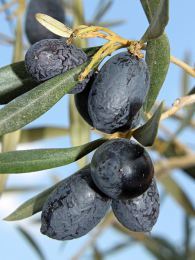
Olive leaf, Olea Europaea courtesy of wikimedia commons.
Natural Alternatives to Fluoroquinolones
The answer is YES there are very effective plant derived natural anti-microbials which have been used for centuries to combat infections. Here we list only a few of many.
Oregano Oil is very effective as an antimicrobial for a variety of infections. See these articles:
1) Oregano Oil for Travelers Diarrhea,
2) COPD Natural Treatments
3) Biofilms in Chronic Sinusitis
Allicin, the active ingredient in Garlic, is an effective antimicrobial agent. See these articles:
1) Garlic as Effective for Coronary Calcium Score and as antimicrobial.
2) Garlic as an Antimicrobial Agent
Berberine (Oregon Grape) is an effective antimicrobial agent. See this article: Berberine Antidote to a Modern Epidemic
Olive Leaf Extract is another very effective antimicrobial agent. See this article:
The Amazing Olive Leaf.
Jeffrey Dach MD
7450 Griffin Road
Suite 180/190
Davie Fl 33314
954 792 4663
Links and references:
1) Fluoroquinolone adverse effects Golomb BMJ 2015
Fluoroquinolone-induced serious, persistent, multisymptom adverse effects.
Golomb BA, Koslik HJ, Redd AJ. BMJ Case Rep. 2015 Oct 5;2015.
significant disability in previously
healthy, highly functional individuals
These findings buttress and extend prior reports involving FQ-induced tendon, muscle, central nervous, psychiatric, peripheral nervous, gastrointestinal, autonomic and endocrine FQ-induced serious and persistent AEs.
mitochondrial dysfunction
FQs be avoided for non-life-threatening, mild, moderate and uncomplicated infections.
full free pdf
2) Fluoroquinolone-associated tendinopathy.
Tsai, Wen-Chung, and Yun-Ming Yang. “Fluoroquinolone-associated tendinopathy.” Chang Gung Med J 34.5 (2011): 461-467.
The fluoroquinolones (FQs) are used to treat a wide range of infections because of their excellent gastrointestinal absorption, superior tissue penetration and broad-spectrum activity. Recently, FQ-associated tendinopathy and tendon rupture have been reported, especially in the elderly and patients with diabetes and renal failure. However, these adverse effects do not appear to be widely known among physicians. Because of the frequent use of FQs in clinical practice, physicians should be aware of their potential for severe disability from tendon rupture. Achilles tendinopathy or rupture is among the most serious side effects associated with FQ use, with reports markedly increasing, especially with the use of ciprofloxacin. The histopathologic findings include degenerative lesions, fissures, interstitial edema without cellular infiltration, necrosis and neovascularization. There are possible molecular mechanisms accounting for FQ-associated tendinopathy. First, ciprofloxacin mediates inhibition of cell proliferation and G2/M cell cycle arrest in tendon cells by down-regulation of cyclin B and cyclin-dependent kinase 1. Second, ciprofloxacin inhibits the spead and migration of tenocytes by down-regulation of focal adhesion kinase phosphorylation. Third, ciprofloxacin enhances the enzymatic activity of matrix metalloproteinase-2 with degradation of type I collagen. Management of FQ-associated tendinopathy includes immediate discontinuation of FQs, rest, non-steroidal anti-inflammatory drugs, physical modalities and eccentric strengthening exercise. Tendon rupture may require surgical intervention.
free full text
3) Fluoroquinolone-induced tendinopathy: etiology and preventive measures.
Kaleagasioglu, Ferda, and Ercan Olcay. “Fluoroquinolone-induced tendinopathy: etiology and preventive measures.” The Tohoku journal of experimental medicine 226.4 (2012): 251-258.
Tendinopathy is a serious health problem and its etiology is not fully elucidated. Among intrinsic and extrinsic predisposing factors of tendinopathy, the impact of therapeutic agents, especially fluoroquinolone (FQ) group antibiotics, is recently being recognized. FQs are potent bactericidal agents widely used in various infectious diseases, including community acquired pneumonia and bronchitis, chronic osteomyelitis, traveler’s diarrhea, typhoid fever, shigellosis, chronic bacterial prostatitis, uncomplicated cervical and urethral gonorrhea and prophylaxis of anthrax. FQs have an acceptable tolerability range. However, many lines of evidence for developing tendinitis and tendon rupture during FQ use have resulted in the addition of a warning in patient information leaflets. FQ-induced tendinopathy presents a challenge for the clinician because healing response is poor due to low metabolic rate in mature tendon tissue and tendinopathy is more likely to develop in patients who are already at high risk, such as elderly, solid organ transplant recipients and concomitant corticosteroid users. FQs become photo-activated under exposure to ultraviolet light, and this process results in formation and accumulation of intracellular reactive oxygen species (ROS). The subsequent FQ-related oxidative stress disturbs mitochondrial functions, leading to apoptosis. ROS overproduction also has direct cytotoxic effects on extracellular matrix components. Understanding the mechanisms of the FQ-associated tendinopathy may enable designing safer therapeutic strategies, hence optimization of clinical response. In this review, we evaluate multi-factorial etiology of the FQ-induced tendinopathy and discuss proposed preventive measures such as antioxidant use and protection from natural sunlight and artificial ultraviolet exposure.
4) Beware of fluoroquinolones: You, your patient, and the FDA By Matthew DeLaney, MD|April 7th, 2014
full free pdf Musculoskeletal Complications Fluoroquinolones Athletic Hall 2011
Hall, Mederic M., Jonathan T. Finnoff, and Jay Smith. “Musculoskeletal complications of fluoroquinolones: guidelines and precautions for usage in the athletic population.” PM&R 3.2 (2011): 132-142.
5) full pdf Ciprofloxacin induced chondrotoxicity and tendinopathy Adikwu 2012
Adikwu, Elias, and Nelson Brambaifa. “Ciprofloxacin induced chondrotoxicity and tendinopathy.” American Journal of Pharmacology and Toxicology 7.3 (2012): 94-100.
free full text
6) Neurology. 2014 Sep 30;83(14):1261-3.
Oral fluoroquinolone use and risk of peripheral neuropathy: a pharmacoepidemiologic study. Etminan M1, Brophy JM2, Samii A2.
To quantify the risk of peripheral neuropathy (PN) with oral fluoroquinolone (FQ) use.
METHODS:We conducted a case-control study within a cohort of men aged 45 to 80 years in the United States followed from 2001 to 2011. Cases were defined as those with the first physician visit diagnosis of PN, polyneuropathy, or drug-induced polyneuropathy. Four controls were matched to each case by age, follow-up, and calendar time using density-based sampling. As a sensitivity analysis, we also quantified the risk of PN with finasteride use, a drug that is not expected to increase the risk of PN. Rate ratios (RRs) for current users of FQs were computed using conditional logistic regression, which was adjusted for chronic renal failure, chronic liver disease, hypothyroidism, postherpetic neuralgia, and the use of nitrofurantoin and metronidazole.
RESULTS:We identified 6,226 cases and 24,904 controls. Current users of FQs were at a higher risk of developing PN (RR = 1.83, 95% confidence interval [CI] 1.49-2.27). Current new users had the highest risk (RR = 2.07, 95% CI 1.56-2.74). No risk was observed for current users of finasteride (RR = 1.21, 95% CI 0.97-1.51).
CONCLUSIONS:Current users, especially new users of FQs, are at a higher risk of developing PN. Despite the increase in the use of FQs, clinicians should weigh the benefits against the risk of adverse events when prescribing these drugs to their patients.
7) Fluoroquinolones and Peripheral Neuropathy by David Perlmutter MD neurologist
8) Dangers of Fluoride-Based Antibiotics, Plus Natural Solutions
by Paul Fassa May 6, 2013
9)Surviving Cipro Web Site
A Guide to Fluoroquinolone Toxicity Syndrome and Finding a Cure
10) More references on adverse effects of flouroquinolones.
11) Fluoroquinolones: The Deadliest Antibiotics on the Market? by Mercola
If your doctor hands you a prescription for a fluoroquinolone antibiotic (this could be not only Cipro or Levaquin but also Avelox or generics ciprofloxacin, levofloxacin, and moxifloxacin, or others), be very certain that your condition warrants the risks that come along with taking these drugs.
Fluoroquinolones have fluoride as a central part of the drug. Fluoride is a known neurotoxin, and drugs with an attached fluoride can penetrate into very sensitive tissues.
12) Five Natural Alternatives to Antibiotics
full free
13) Upadhyay, Abhinav et al. âCombating Pathogenic Microorganisms Using Plant-Derived Antimicrobials: A Minireview of the Mechanistic Basis.â BioMed Research International 2014 (2014): 761741. PMC. Web. 8 Oct. 2015.
14) full free pdf
Simões, Manuel, Madalena Lemos, and Lúcia C. Simões. “Phytochemicals Against Drug-Resistant Microbes.” Dietary Phytochemicals and Microbes. Springer Netherlands, 2012. 185-205.
Jeffrey Dach MD
7450 Griffin Road Suite 190
Davie, Fl 33314
954-792-4663
www.jeffreydachmd.com
http://www.drdach.com
http://www.naturalmedicine101.com
http://www.truemedmd.com
Disclaimer click here: http://www.drdach.com/wst_page20.html
The reader is advised to discuss the comments on these pages with his/her personal physicians and to only act upon the advice of his/her personal physician. Also note that concerning an answer which appears as an electronically posted question, I am NOT creating a physician â patient relationship. Although identities will remain confidential as much as possible, as I can not control the media, I can not take responsibility for any breaches of confidentiality that may occur.
Copyright (c) 2015 Jeffrey Dach MD All Rights Reserved. This article may be reproduced on the internet without permission, provided there is a link to this page and proper credit is given.
FAIR USE NOTICE: This site contains copyrighted material the use of which has not always been specifically authorized by the copyright owner. We are making such material available in our efforts to advance understanding of issues of significance. We believe this constitutes a âfair useâ of any such copyrighted material as provided for in section 107 of the US Copyright Law. In accordance with Title 17 U.S.C. Section 107, the material on this site is distributed without profit to those who have expressed a prior interest in receiving the included information for research and educational purposes.
Serving Areas of: Hollywood, Aventura, Miami, Fort Lauderdale, Pembroke Pines, Miramar, Davie, Coral Springs, Cooper City, Sunshine Ranches, Hallandale, Surfside, Miami Beach, Sunny Isles, Normandy Isles, Coral Gables, Hialeah, Golden Beach ,Kendall,sunrise, coral springs, parkland,pompano, boca raton, palm beach, weston, dania beach, tamarac, oakland park, boynton beach, delray,lake worth,wellington,plantation.
The post Adverse Effects of Flouroquinolone Antibiotics appeared first on Jeffrey Dach MD .
September 22, 2015
Low Level Endotoxemia, Depression, Endocrinopathy and Coronary Artery Disease by Jeffrey Dach MD
 Low Level Endotoxemia, Depression, Endocrinopathy and Coronary Artery Disease
Low Level Endotoxemia, Depression, Endocrinopathy and Coronary Artery Disease
by Jeffrey Dach MD
Tom, a 52 year old male arrived in my office with chief complaint of depression, chronic fatigue, fibromyalgia and low libido. Tom is a successful business man with a string of lucrative stores. His psychiatrist prescribes two different anti-depressant drugs, an SSRI drug and lithium carbonate. His cardiologist prescribes lisinopril for hypertension. In spite of treatment, Tom complains of continued symptoms of depression, chronic fatigue, vague body aches, pains and arthritis.
Hypothalamic Dysfunction from Leaky Gut
 Tom also complains of abdominal gas and bloating, especially after meals. His fecal stool anti-gliadin IgA antibody was markedly elevated (343 units with normal less than 10 units). He had multiple other food sensitivities to egg, milk and soy protein. A lactulose-mannitol intestinal permeability test was abnormal. A diagnosis of wheat gluten sensitivity and âLeaky Gut Syndromeâ was made, and Tom started his gluten-free diet.
Tom also complains of abdominal gas and bloating, especially after meals. His fecal stool anti-gliadin IgA antibody was markedly elevated (343 units with normal less than 10 units). He had multiple other food sensitivities to egg, milk and soy protein. A lactulose-mannitol intestinal permeability test was abnormal. A diagnosis of wheat gluten sensitivity and âLeaky Gut Syndromeâ was made, and Tom started his gluten-free diet.
Tom had low testosterone (263 ng/dl Total) and low LH/FSH as well, suggesting hypothalamic dysfunction. Tom was given a clomiphene stimulation test. Following the six week daily administration of 25 mg of clomiphene (oral tablet), Tom reported improved libido and energy. His serum LH increased from 2.5 to 9.7 mIU/ml, and serum Testosterone increased from 263 to 543 ng/dl. Tom found he could taper off one of the antidepressants (the Lithium) and reduced his SSRI drug dosage. A CAT scan calcium score showed elevated calcium score of 490 (95th percentile) indicating significant atherosclerotic plaque and high risk for heart disease. Tomâs cardiologist started him on atorvastatin, a statin anti-cholesterol drug, and a follow up cholesterol on the statin was 125 mg/dl.
Central Hypothyroidism and Hypothalamic Dysfunction
Tomâs thyroid labs suggested central hypothyroidism, a core feature of chronic fatigue, and fibromyalgia described by Drs Holtorf and Teitelbaum.(1-3) Tomâs TSH was in the low normal range (0.9 mIU/L), however, the Free T3 and Free T4 were also in the low end of the range (2.3 pg/ml and 0.8 ng/dL). After 6 weeks of treatment with natural desiccated thyroid (1 grain tablet daily), repeat labs showed improvement. The TSH was suppressed .04, and the free T3 and T4 had risen to the upper end of the normal range. (4.1 pg/ml / 1.6 ng/dL) Although low cortisol is a common feature of chronic fatigue syndrome, Tomâs serum cortisol was normal, so hydrocortisone was not given.
My Diagnosis: Severe gluten sensitivity with leaky gut, LPS induced depression, chronic fatigue, fibromyalgia, central hypothyroidism and hypogonadism with hypothalamic dysfunction responsive to Clomiphene stimulation, and LPS induced coronary atherosclerosis.
Clomiphene Blocks Hypothalamic Estrogen Receptors and Up-Regulates the HPA
 Clomiphene, FDA approved as a fertility drug for women, is considered âoff label useâ when prescribed to males. Clomiphene blocks the hypothalamic estrogen receptor, thus upregulating the HPA, increasing LH and FSH and increasing testosterone. (4) Clomiphene preserves fertility, unlike exogenous testosterone which suppresses LH/FSH and impairs fertility. (5-9)
Clomiphene, FDA approved as a fertility drug for women, is considered âoff label useâ when prescribed to males. Clomiphene blocks the hypothalamic estrogen receptor, thus upregulating the HPA, increasing LH and FSH and increasing testosterone. (4) Clomiphene preserves fertility, unlike exogenous testosterone which suppresses LH/FSH and impairs fertility. (5-9)
Hypothalamic Control of Testosterone by Estrogen Receptors
How does clomiphene work? A 2006 report in the European Journal of Endocrinology by Dr. Rochira from Italy is illustrative.(5) Dr. Rochira studied two males with genetic deficiency in the aromatase enzyme, who had virtually no circulating estrogen. When these two males were given topical estrogen, this decreased gonadotropin releasing hormone, suppressed LH, FSH, and suppressed testosterone, as well.(5) This elegant study shows how estrogen stimulation of hypothalamic receptors suppresses LH/FSH as well as testosterone production in males. Clomiphene blocks hypothalamic estrogen receptors, increasing testosterone production.
Irreversible Hypothalamic Damage
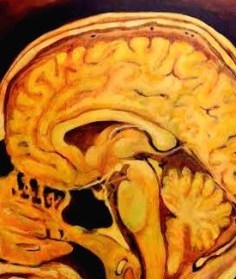 Tomâs excellent response to Clomiphene indicated his hypothalamic dysfunction is indeed reversible, and has a good prognosis with treatment. If the patient fails to respond to clomiphene, then irreversible hypothalamic damage is likely, usually from toxins or psycho-active drugs. For example, animal studies using psychoactive drugs such as paroxetine, sertraline, amphetamines, and MDMA show similar irreversible damage to serotonergic axons and nerve terminals, especially the fine fibers arising from the dorsal raphe nucleus which supply serotonin to the brain.(10) Dr. Bauman says: âhigh-dose administration of SSRIs (antidepressants) produces swollen, fragmented, and abnormal 5-HT (5-hyroxy-tryptophan) terminals, which are indistinguishable from the effects of MDMA and other substituted amphetaminesâ.(10) My clinical experience is in agreement having seen patients with irreversible hypothalamic dysfunction after long term SSRI antidepressant, amphetamine, benzodiazepine or MDMA use, singly or in combination. These patients have irreversible hypothalamic dysfunction, and usually require exogenous testosterone, thyroid and hydrocortisone.(1-3)
Tomâs excellent response to Clomiphene indicated his hypothalamic dysfunction is indeed reversible, and has a good prognosis with treatment. If the patient fails to respond to clomiphene, then irreversible hypothalamic damage is likely, usually from toxins or psycho-active drugs. For example, animal studies using psychoactive drugs such as paroxetine, sertraline, amphetamines, and MDMA show similar irreversible damage to serotonergic axons and nerve terminals, especially the fine fibers arising from the dorsal raphe nucleus which supply serotonin to the brain.(10) Dr. Bauman says: âhigh-dose administration of SSRIs (antidepressants) produces swollen, fragmented, and abnormal 5-HT (5-hyroxy-tryptophan) terminals, which are indistinguishable from the effects of MDMA and other substituted amphetaminesâ.(10) My clinical experience is in agreement having seen patients with irreversible hypothalamic dysfunction after long term SSRI antidepressant, amphetamine, benzodiazepine or MDMA use, singly or in combination. These patients have irreversible hypothalamic dysfunction, and usually require exogenous testosterone, thyroid and hydrocortisone.(1-3)
A Nasty Combination of PPIâs and SSRIs
The combination of PPI antacids and SSRI antidepressants (omeprazole and venlafaxine) is particularly damaging. Omeprazole, a PPI (proton pump inhibitor), effectively turns off gastric acid production. Long term use of proton pump inhibitor drugs is associated with adverse effects of gut dysbiosis, malabsorption of vitamin B12, calcium, iron and magnesium, as well as clostridium difficile enterocolitis, pneumonia, and osteoporotic fracture. (11-12) These adverse effects are bad enough. Even worse is the inhibition of cytochrome P450 enzyme system, reducing clearance of SSRI antidepressants by 20-40%, potentiating the effect of the drug. (13) One such young male on this drug combination was found to have a testosterone level of 47 ng/dl, the lowest I have ever seen, and no doubt a victim of drug induced damage to the serotoninergic axons in the hypothalamus. Another common adverse side effect of SSRI drugs is loss of sexual function which may persist for years after stopping the drug. (14-16) Again, I suspect this is caused by damage to brain stem nuclei. Perhaps future animal studies will clarify this anatomical defect.
Leaky Gut, LPS Causes Microglia Activation in the Brain
 As recent work by Allesio Fasano has revealed, in susceptible individuals, the ingestion of wheat gluten triggers the release of Zonulin, a hormone which opens the âtight junctionsâ between epithelial cells of the GI mucosa.(17-20) For people with gluten sensitivity, the prolonged opening of channels between the epithelial cells makes the gut lining permeable to undigested food particles and gut bacteria which âleakâ into the blood stream, thus we have a âLeaky Gutâ. This is also called low level endotoxemia, or LPS, short for Lipo-Poly-Saccharide, the outer membrane of enteric gram negative bacteria which activates macrophages and immune cells to release of inflammatory cytokines into the blood stream. This slurry of LPS and inflammatory mediators eventually reaches the cerebral circulation causing inflammation in the brain with activation of micro-glia, disturbance of the autonomic nervous system and neurotransmitter production causing depression, chronic fatigue, autonomic dysfunction and other disorders. (21-24)(92-104)
As recent work by Allesio Fasano has revealed, in susceptible individuals, the ingestion of wheat gluten triggers the release of Zonulin, a hormone which opens the âtight junctionsâ between epithelial cells of the GI mucosa.(17-20) For people with gluten sensitivity, the prolonged opening of channels between the epithelial cells makes the gut lining permeable to undigested food particles and gut bacteria which âleakâ into the blood stream, thus we have a âLeaky Gutâ. This is also called low level endotoxemia, or LPS, short for Lipo-Poly-Saccharide, the outer membrane of enteric gram negative bacteria which activates macrophages and immune cells to release of inflammatory cytokines into the blood stream. This slurry of LPS and inflammatory mediators eventually reaches the cerebral circulation causing inflammation in the brain with activation of micro-glia, disturbance of the autonomic nervous system and neurotransmitter production causing depression, chronic fatigue, autonomic dysfunction and other disorders. (21-24)(92-104)
Above left image of activated microglia after LPS infusion from (22): Qin L, Wu X, Block ML, et. al. Systemic LPS causes chronic neuroinflammation and progressive neurodegeneration. Glia. 2007;55(5):453-62.
LPS, Endotoxemia, Major Depression and Atherosclerosis

Painting by Vincent van Gogh (1853â1890) entitled “At Eternity’s Gate” May 1890, oil on canvas in the Kröller-Müller Museum. Courtesy of wikimedia commons.
Michael Maes and others have found elevated antibodies to LPS (enteric gram negative organisms) in patients with major depression disorder (MDD), chronic fatigue and fibromyalgia. Patient improvement correlates with decreasing LPS antibody levels. Perhaps this explains why depression is frequently refractory to SSRI drugs. If the etiology is microglial activation and brain inflammation triggered by circulating LPS with low level endotoxemia, as proposed by Michael Maes and others, then SSRI drugs are not addressing the underlying cause which is LPS activation of Toll receptors in glial cells with upregulation of Nuclear Factor Kappa Beta (NF-kB).(25-36)
Since depression and coronary artery disease may share a common pathway, one might ask if there is an association. Major depressive disorder is associated with an 80% – 200% increased risk of death from coronary heart disease, depending on the study cited.(37-39) Indeed, anti-depressant drug use is common among patients with coronary artery disease. Women with history of antidepressant use had 334% greater risk of sudden cardiac death in the Nurseâs Health Study.(39)
One might ask if there is a shared etiology between depression and atherosclerotic vascular disease. The two entities are both caused by translocated LPS induced inflammation. Indeed endotoxemia has been considered as an etiology of atherosclerotic disease.(65) Dr Wiederman from Italy found that subjects with circulating (LPS) endotoxin levels greater than 50 pg/mL had a 3-fold greater risk of cardiovascular disease, compared to those under 50 pg/m.(40) The Toll receptor is the pattern recognition receptor on the macrophage membrane surface which identifies the LPS and triggers NF-Kb activation, a transcription gene for inflammatory cytokines in both the brain and endothelium. Blocking this receptor might be a logical treatment to prevent heart disease. This has been done in a genetically modified mouse model. Elegant studies reveal a 60% reduction in atheroclerosis in mice lacking the Toll receptor or its downstream signaling molecule MD88.(41) Atherosclerotic disease in dialysis patients is directly related to LPS induced endotoxemia. (42-43)
Atherosclerotic Plaque as Infected Biofilm
 In his 1908 Textbook of Medicine, Sir William Osler speculated that atherosclerotic plaque was caused by infection. Over the years, Oslerâs text book gathered dust while the cholesterol theory prevailed, and statin drugs provided a new revenue stream for the drug industry. The idea that infection caused atherosclerosis was resurrected in the 1970âs when Herpes virus was found to induce atherosclerotic lesions in chickens identical to those in humans.(44) Interest again surged in 1993 when Dr. Kuo reported Chlamydia infection in atherosclerotic plaque material from autopsies. (45) More recently, working independently, Drs. Steven Fry, Bernard Lanter, Stephan Ott and Omry Koren examined atherosclerotic plaque obtained from surgical specimens using 16S rRNA cloning techniques. Quite remarkably, they all found atherosclerotic plaque is biofilm colonized by multiple bacterial, fungal and protozoal organisms. (46-50)
In his 1908 Textbook of Medicine, Sir William Osler speculated that atherosclerotic plaque was caused by infection. Over the years, Oslerâs text book gathered dust while the cholesterol theory prevailed, and statin drugs provided a new revenue stream for the drug industry. The idea that infection caused atherosclerosis was resurrected in the 1970âs when Herpes virus was found to induce atherosclerotic lesions in chickens identical to those in humans.(44) Interest again surged in 1993 when Dr. Kuo reported Chlamydia infection in atherosclerotic plaque material from autopsies. (45) More recently, working independently, Drs. Steven Fry, Bernard Lanter, Stephan Ott and Omry Koren examined atherosclerotic plaque obtained from surgical specimens using 16S rRNA cloning techniques. Quite remarkably, they all found atherosclerotic plaque is biofilm colonized by multiple bacterial, fungal and protozoal organisms. (46-50)
Cholesterol Theory has Been Falsified
Current accepted dogma proposes cholesterol as the cause of atherosclerotic plaque, and therefore, reduction of serum cholesterol with a statin drug should prevent coronary artery disease. Quite to the contrary, the cholesterol theory has been falsified. According to Dr. William R Ware, there is no correlation between serum cholesterol and the amount of atherosclerotic plaque when reviewing either autopsy studies or coronary calcium score studies.(51) The lack of relationship between serum cholesterol and calcium score was reported by Dr. Hecht:âThere were no significant differences in the calcium scores throughout the entire range of all lipid parameters; calcium percentiles were virtually identical within lipid value subgroups.â(52) Drs. Ravnskov and McKully concur with Drs. Ware and Hecht.(53-54) A dozen studies show low cholesterol in the elderly is a marker for increased mortality, not improved survival. Also, in selected medical conditions such as congestive heart failure, haemodialysis, chronic obstructive pulmonary disease (COPD), as in the elderly, higher cholesterol is associated with improved survival, and lower cholesterol with increased mortality.(55)
The Endotoxin-Lipoprotein Hypothesis
A low serum cholesterol is problematic for another reason. Cholesterol is part of our immune defense system. Both animal and human studies show cholesterol inactivates LPS and bacterial endotoxin, serving as a second line of defense against translocated LPS. (56-57) The ability of cholesterol to detoxify LPS is explained by Dr. Sandek as the âendotoxin-lipoprotein hypothesisâ.(55) Dr. Pajkrt studied this hypothesis in-vivo with human volunteers, infusing reconstituted HDL cholesterol just prior to endotoxin infusion. The authors concluded the HDL cholesterol infusion, âdramatically reduced the endotoxin-induced inflammatory response, reduced inflammatory cytokines, cell activation, and clinical symptoms in humans ⦠partly caused by neutralization of endotoxin by reconstituted HDL cholesterol.â (56) As one might expect, low HDL cholesterol level is a predictor of increased mortality in patients with endotoxemia from sepsis. (69)
Statins Fail for Calcium Score
 Getting back to our patientâs elevated calcium score treatment with a statin drug to reduce cholesterol. One might ask the question, even though the statin drug is effective for reducing cholesterol, how effective are statins for reducing calcium score? Randomized trials using statin drugs to treat calcium score have been disappointing. (58,59) Dr. Gill summarizes the studies: âas of 2010 there had been five randomized controlled studies showing that statin drug treatment does not reduce coronary calcium score. Worse, the statin treatment showed progression of coronary calcium score indistinguishable from the non-treated placebo group.â(60)
Getting back to our patientâs elevated calcium score treatment with a statin drug to reduce cholesterol. One might ask the question, even though the statin drug is effective for reducing cholesterol, how effective are statins for reducing calcium score? Randomized trials using statin drugs to treat calcium score have been disappointing. (58,59) Dr. Gill summarizes the studies: âas of 2010 there had been five randomized controlled studies showing that statin drug treatment does not reduce coronary calcium score. Worse, the statin treatment showed progression of coronary calcium score indistinguishable from the non-treated placebo group.â(60)
Aged Garlic Treats Calcium Score
Since statin drugs have been a failure for treating calcium score, is there an alternative? The answer comes from Matthew J Budoff MD, an early pioneer of the calcium score as a surrogate marker for coronary plaque. Dr. Budoff explored the use of aged garlic for elevated calcium score in three randomized placebo controlled trials. The aged garlic was far more effective than the statin drug, reducing the progression of calcium score by 60-70% compared to controls, a remarkable finding. (61-63)
Mechanism for Aged Garlic Protection from Atherosclerosis
 The mechanism by which garlic confers protection from atherosclerosis was studied in genetically modified mice by Dr. Ayelet Gonen. Daily garlic (Allicin) reduced the atherosclerotic plaque area by 70% in apoE-deficient mice, and by 60% in LDL receptor knockout mice. Additional studies showed the possible mechanism of protection. Garlic (Allicin) binds to the LDL particle and prevents LDL oxidation, thus inhibiting macrophage uptake and degradation of LDL.(64)
The mechanism by which garlic confers protection from atherosclerosis was studied in genetically modified mice by Dr. Ayelet Gonen. Daily garlic (Allicin) reduced the atherosclerotic plaque area by 70% in apoE-deficient mice, and by 60% in LDL receptor knockout mice. Additional studies showed the possible mechanism of protection. Garlic (Allicin) binds to the LDL particle and prevents LDL oxidation, thus inhibiting macrophage uptake and degradation of LDL.(64)
Atherosclerotic Plaque as Pseudomonas Infected Biofilm
If atherosclerotic plaque is an infected biofilm, perhaps the anti-microbial activity of aged garlic could represent another mechanism for garlicâs benefits in retarding calcium score progression. Dr. Bernard Lanter identified Pseudomonas 16S rRNA genes in 6 of 15 atherosclerotic plaque specimens.(47) Dr. Omry Koren found Pseudomonas (Chryseomonas) in all (100%) plaque specimens examined (50) Garlic is anti-microbial and is effective against Pseudomonas biofilm, inhibiting quorum sensing and virulence. (66-67) Dr. Lihuaâs group showed âAllicin disturbed formation and maturation of Pseudomaonas biofilmâ(68) As mentioned above, plaque harbors a diverse biofilm colony of bacterial, fungal and protozoal organisms. If so, then perhaps a synergistic combination of additional botanicals such as garlic, berberine and boswellia would be more effective. Unresolved questions relate to the timing of the plaque infection. When does the infection occur in the life cycle of plaque formation? Is infection an initiating feature, or does infection occur later, after the plaque has already formed? These and other questions await further study.
 Berberine, Antidote for Leaky Gut Epidemic
Berberine, Antidote for Leaky Gut Epidemic
A state of low level endotoxemia has been implicated in the increasing incidence of celiac disease, inflammatory bowel disease and intestinal infection.(70-71) Treatment of leaky gut and low level endotoxemia involves elimination of NSAIDS, PPIâs, alcohol, wheat gluten, other reactive foods, and pesticides from the diet. Probiotics, digestive enzymes, fiber, glutamine, colostrum and zinc are frequently found useful for the leaky gut patient.(72-75) Although berberine acts as an anti-diabetic agent similar to metformin with upregulation of AMP kinase, berberine has may other benefits, and may represent our âantidote for an epidemicâ.(76-77) Berberine actually closes down the âTight Junctionsâ in the gut epithelial cells.(78) Berberine has anti-inflammatory activity, downregulating pro-inflammatory genes in macrophages such as TNF-alpha, IL-1beta, IL-6, etc.(79) Berberine has anti-endotoxin effects by blocking the Toll receptors in LPS treated mice. Dr Chu concludes: âWith the advantage of lower cost, faster curative effect, and little side effect, berberine, the newly-discovered LPS antagonist, could be widely utilized as a substitute for expensive drugs in the treatment of LPS-induced diseases.â (80) Berberine acts as a potent inhibitor of neuro-inflammation via activation of AMP Kinase signaling pathways in micro-glial cells thus inhibiting NF-kB.(81-82) Other natural products which inhibit micro-glial activation are resveratrol, pterostilbene, and boswellia.(83-86) Berberine exerts antidepressant-like effects in various mouse models of depression by increasing neurotransmitter levels in the brain. Dr Kulkarni found berberine âincreased levels of norepinephrine (31%), serotonin (47%) and dopamine (31%) in the whole brainâ(87) Berberine is effective for acute diarrhea, inhibits bio-film formation, and demonstrates remarkable anti-microbial activity against chlamydia, MERSA and other micro-organisms.(88) Berberine inhibits atherosclerosis in genetically modified mice.(89) Berberine is useful for congestive heart failure and cardiomyopathy by increasing the ejection fraction, and preventing arrhythmia.(90-91)
Conclusion
In conclusion, low level level endotoxemia from leaky gut has received considerable attention as an etiologic factor for many of our modern diseases. Our case report illustrates a patient with depression, hypothalamic dysfunction, endocrinopthy, atherosclerotic vascular disease and hypertension, perhaps all caused by a shared etiology, leaky gut with low level endotoxemia.
Jeffrey Dach MD
7450 Griffin Road Suite 180/190
Davie, Fl 33314
Original article here (pdf):Â Gut Brain Depressive Hypothalamic Dysfunction High Calcium Score Leaky Gut Jeffrey Dach 2015Â Â ALTERNATIVE THERAPIES, VOL. 21 SUPPL. 3 p. 10-15
Click to Download PowerPoint presentation of this article: GUT_Brain_Jeffrey_Dach MD
References
1) Holtorf, K. Diagnosis and treatment of hypothalamic-pituitary-adrenal (HPA) axis dysfunction in patients with chronic fatigue syndrome (CFS) and fibromyalgia (FM). J. Chronic Fatigue Syndr. 2007;14(3): 59-88
2) Teitelbaum, J. Effective Treatment of Chronic Fatigue Syndrome. J Integr Med. 2011;10(6): 44.
3) Teitelbaum, J. Chronic Fatigue Syndrome, Fibromyalgia, and Myalgic Encephalomyelitis: A Clinical Perspective. Altern Ther Health Med. 2014;20(1):45.
4) Kato J, Kobayashi T, Villec CA. Effect of clomiphene on the uptake of estradiol by the anterior hypothalamus and hypophysis. Endocrinology. 1968;82(5):1049-1052.
5) Rochira V, Zirilli L, Genazzani AD, et al. Hypothalamicâpituitaryâgonadal axis in two men with aromatase deficiency: evidence that circulating estrogens are required at the hypothalamic level for the integrity of gonadotropin negative feedback. European J Endocrinol. 2006;155.4 (2006): 513-522.
6) Moskovic DJ, Katz DJ, Akhavan A, Park K, Mulhall JP. Clomiphene citrate is safe and effective for longâterm management of hypogonadism. BJU Int. 2012;110(10): 1524-1528.
7) Katz DJ, Nabulsi O, Tal R, Mulhall JP. Outcomes of clomiphene citrate treatment in young hypogonadal men. BJU Int.2012;110(4): 573-578.
8) Ioannidou-Kadis S, Wright PJ, Neely RD, Quinton R. Complete reversal of adult-onset isolated hypogonadotropic hypogonadism with clomiphene citrate. Fertil Steril. 2006;86(5):1513.e5-9.
9) Guay AT, Jacobson J, Perez JB, Hodge MB, Velasquez E. Clomiphene increases free testosterone levels in men with both secondary hypogonadism and erectile dysfunction: who does and does not benefit?. Int J Impot Res. 2003;15(3):156-65.
10) Baumann MH, Wang X, Rothman RB. 3,4-Methylenedioxymethamphetamine (MDMA) neurotoxicity in rats: a reappraisal of past and present findings. Psychopharmacology (Berl). 2007;189(4):407-24.
11) Ito T, Jensen RT. Association of long-term proton pump inhibitor therapy with bone fractures and effects on absorption of calcium, vitamin B12, iron, and magnesium. Curr Gastroenterol Rep. 2010;12(6):448-57.
12) Heidelbaugh JJ, Kim AH, Chang R, Walker PC. Overutilization of proton-pump inhibitors: what the clinician needs to know. Therap Adv Gastroenterol. 2012;5(4):219-32.
13) Gjestad C, Westin AA, Skogvoll E, Spigset O. Effect of proton pump inhibitors on the serum concentrations of the selective serotonin reuptake inhibitors citalopram, escitalopram, and sertraline. Ther Drug Monit. 2015 Feb;37(1):90-7.
14) Gregorian RS, Golden KA, Bahce A, Goodman C, Kwong WJ, Khan ZM. Antidepressant-induced sexual dysfunction. Ann Pharmacother. 2002;36(10):1577-89.
15) Csoka AB, Bahrick A, Mehtonen OP. Persistent sexual dysfunction after discontinuation of selective serotonin reuptake inhibitors. J Sex Med. 2008;5(1):227-33.
16) Bahrick, AS. Persistence of sexual dysfunction side effects after discontinuation of antidepressant medications: Emerging evidence. The Open Psychology Journal, 2008;1(1).
17) Fasano A. Zonulin and its regulation of intestinal barrier function: the biological door to inflammation, autoimmunity, and cancer. Physiol Rev. 2011;91(1):151-75.
18) Fasano A. Leaky gut and autoimmune diseases. Clin Rev Allergy Immunol. 2012;42(1):71-8.
19) Catassi C, Bai JC, Bonaz B, et al. Non-Celiac Gluten sensitivity: the new frontier of gluten related disorders. Nutrients. 2013;5(10):3839-53
20). Jackson JR, Eaton WW, Cascella NG, Fasano A, Kelly DL. Neurologic and psychiatric manifestations of celiac disease and gluten sensitivity. Psychiatr Q. 2012;83(1):91-102.
21) Miller AH, Maletic V, Raison CL. Inflammation and its discontents: the role of cytokines in the pathophysiology of major depression. Biol Psychiatry. 2009;65(9):732-41.
22) Qin L, Wu X, Block ML, et. al. Systemic LPS causes chronic neuroinflammation and progressive neurodegeneration. Glia. 2007;55(5):453-62.
23) Qin L, Liu Y, Hong JS, Crews FT. NADPH oxidase and aging drive microglial activation, oxidative stress, and dopaminergic neurodegeneration following systemic LPS administration. Glia. 2013;61(6):855-68.
24) Liu Y, Qin L, Wilson B, et al. Endotoxin induces a delayed loss of TH-IR neurons in substantia nigra and motor behavioral deficits. Neurotoxicology. 2008 Sep;29(5):864-70.
25) Maes M, Kubera M, Leunis JC. The gut-brain barrier in major depression: intestinal mucosal dysfunction with an increased translocation of LPS from gram negative enterobacteria (leaky gut) plays a role in the inflammatory pathophysiology of depression. Neuro Endocrinol Lett. 2008;29(1):117-24.
26) Maes M, Mihaylova I, Leunis JC. Increased serum IgA and IgM against LPS of enterobacteria in chronic fatigue syndrome (CFS): indication for the involvement of gram-negative enterobacteria in the etiology of CFS and for the presence of an increased gut-intestinal permeability. J Affect Disord. 2007;99(1-3):237-40.
27) Maes M, Kubera M, Leunis JC. The gut-brain barrier in major depression: intestinal mucosal dysfunction with an increased translocation of LPS from gram negative enterobacteria (leaky gut) plays a role in the inflammatory pathophysiology of depression. Neuro Endocrinol Lett. 2008;29(1):117-24.
28) Maes M, Leunis JC. Normalization of leaky gut in chronic fatigue syndrome (CFS) is accompanied by a clinical improvement: effects of age, duration of illness and the translocation of LPS from gram-negative bacteria. Neuro Endocrinol Lett. 2008;29(6):902-10.
29) Maes M, Kubera M, Leunis JC, Berk M. Increased IgA and IgM responses against gut commensals in chronic depression: further evidence for increased bacterial translocation or leaky gut. J Affect Disord. 2012;141(1):55-62
30) Maes M, Twisk FN, Kubera M, et. al. Increased IgA responses to the LPS of commensal bacteria is associated with inflammation and activation of cell-mediated immunity in chronic fatigue syndrome. J Affect Disord. 2012;136(3):909-17.
31) Maes, M. Major depression and activation of the inflammatory response system. In: Dantzer, Robert, Wollmann, Emmanuelle E., Yirmiya, Raz (Eds.). Cytokines, Stress, and Depression. Springer US, 1999. 25-46.
32) Maes M, Yirmyia R, Noraberg J, et al. The inflammatory & neurodegenerative (I&ND) hypothesis of depression: leads for future research and new drug developments in depression. Metab Brain Dis. 2009;24(1):27-53.
33) Maes M. Depression is an inflammatory disease, but cell-mediated immune activation is the key component of depression. Prog Neuropsychopharmacol Biol Psychiatry. 2011;35(3):664-75
34) Maes M, Mihaylova I, Kubera M, Ringel K. Activation of cell-mediated immunity in depression: association with inflammation, melancholia, clinical staging and the fatigue and somatic symptom cluster of depression. Prog Neuropsychopharmacol Biol Psychiatry. 2012;36(1):169-75.
35) Maes M, Mihaylova I, Kubera M, et al. Increased 8-hydroxy-deoxyguanosine, a marker of oxidative damage to DNA, in major depression and myalgic encephalomyelitis / chronic fatigue syndrome. Neuro Endocrinol Lett. 2009;30(6):715-22.
36) Haroon E, Raison CL, Miller AH. Psychoneuroimmunology meets neuropsychopharmacology: translational implications of the impact of inflammation on behavior. Neuropsychopharmacology. 2012;37(1):137-62.
37) Nicholson A, Kuper H, Hemingway H. Depression as an aetiologic and prognostic factor in coronary heart disease: a meta-analysis of 6362 events among 146 538 participants in 54 observational studies. Eur Heart J. 2006;27(23):2763-74.
38) Celano CM, Huffman JC. Depression and cardiac disease: a review. Cardiol Rev. 2011;19(3):130-42.
39) Whang W, Kubzansky LD, Kawachi I, et al. Depression and risk of sudden cardiac death and coronary heart disease in women: results from the Nurses’ Health Study. J Am Coll Cardiol. 2009;53(11):950-8.
40) Wiedermann CJ, Kiechl S, Dunzendorfer S, et al. Association of endotoxemia with carotid atherosclerosis and cardiovascular disease: prospective results from the Bruneck Study. J Am Coll Cardiol. 1999;34(7):1975-81.
41) Michelsen KS, Wong MH, Shah PK, et al. Lack of Toll-like receptor 4 or myeloid differentiation factor 88 reduces atherosclerosis and alters plaque phenotype in mice deficient in apolipoprotein E. Proc Natl Acad Sci U S A. 2004;101(29):10679-84.
42) Szeto CC, Kwan BC, Chow KM, et al. Endotoxemia is related to systemic inflammation and atherosclerosis in peritoneal dialysis patients. Clin J Am Soc Nephrol. 2008;3(2):431-6.
43) McIntyre CW, Harrison LE, Eldehni MT, et al. Circulating endotoxemia: a novel factor in systemic inflammation and cardiovascular disease in chronic kidney disease. Clin J Am Soc Nephrol. 2011;6(1):133-41.
44) Mawhorter SD, Lauer MA. Is atherosclerosis an infectious disease? Cleve Clin J Med. 2001;68(5):449-58.
45) Kuo CC, Shor A, Campbell LA, et al. Demonstration of Chlamydia pneumoniae in atherosclerotic lesions of coronary arteries. J Infect Dis. 1993;167(4):841-9.
46) Fry SE, Ellis JE, Shabilla MA, Martinez DL, et al. Putative biofilm-forming organisms in the human vasculature: expanded case reports and review of the literature. Phlebological Review 2014; 22(1): 24â37.
47) Lanter BB, Sauer K, Davies DG. Bacteria present in carotid arterial plaques are found as biofilm deposits which may contribute to enhanced risk of plaque rupture. MBio. 2014;5(3):e01206-14.
48) Ott SJ, El Mokhtari NE, Musfeldt M, et al. Detection of diverse bacterial signatures in atherosclerotic lesions of patients with coronary heart disease. Circulation. 2006;113(7):929-37.
49) Ott SJ, El Mokhtari NE, Rehman A, et al. Fungal rDNA signatures in coronary atherosclerotic plaques. Environ Microbiol. 2007;9(12):3035-45.
50) Koren O, Spor A, Felin J, et al. Human oral, gut, and plaque microbiota in patients with atherosclerosis. Proc Natl Acad Sci U S A. 2011;108 Suppl 1:4592-8.
51) Ware WR. The mainstream hypothesis that LDL cholesterol drives atherosclerosis may have been falsified by non-invasive imaging of coronary artery plaque burden and progression. Med Hypotheses. 2009;73(4):596-600.
52) Hecht HS, Superko HR, Smith LK, McColgan BP. Relation of coronary artery calcium identified by electron beam tomography to serum lipoprotein levels and implications for treatment. Am J Cardiol. 2001;87(4):406-12.
53) Ravnskov U, McCully KS. Biofilms, lipoprotein aggregates, homocysteine, and arterial plaque rupture. MBio. 2014;5(5):e01717-14.
54) Ravnskov U, McCully KS. Infections may be causal in the pathogenesis of atherosclerosis. Am J Med Sci. 2012;344(5):391-4.
55) Sandek A., Utchill S, Rauchhaus M. The endotoxin-lipoprotein hypothesis-an update. Arch Med Sci. 2007;3(4A):S81.
56) Pajkrt D, Doran JE, Koster F, et al. Antiinflammatory effects of reconstituted high-density lipoprotein during human endotoxemia. J Exp Med. 1996;184(5):1601-8.
57) Vreugdenhil AC, Rousseau CH, Hartung T, et al. Lipopolysaccharide (LPS)-binding protein mediates LPS detoxification by chylomicrons. J Immunol. 2003;170(3):1399-405.
58) Houslay ES, Cowell SJ, Prescott RJ, et al. Progressive coronary calcification despite intensive lipid-lowering treatment: a randomised controlled trial. Heart. 2006;92(9):1207-12.
59) Schmermund A, Achenbach S, Budde T, et al. Effect of intensive versus standard lipid-lowering treatment with atorvastatin on the progression of calcified coronary atherosclerosis over 12 months: a multicenter, randomized, double-blind trial. Circulation. 2006;113(3):427-37.
60) Gill EA Jr. Does statin therapy affect the progression of atherosclerosis measured by a coronary calcium score? Curr Atheroscler Rep. 2010;12(2):83-7.
61) Budoff M. Aged garlic extract retards progression of coronary artery calcification. J Nutr. 2006;136(3 Suppl):741S-744S.
62) Budoff MJ, Ahmadi N, Gul KM, et al. Aged garlic extract supplemented with B vitamins, folic acid and L-arginine retards the progression of subclinical atherosclerosis: a randomized clinical trial. Prev Med. 2009;49(2-3):101-7.
63) Zeb I, Ahmadi N, Nasir K, et al. Aged garlic extract and coenzyme Q10 have favorable effect on inflammatory markers and coronary atherosclerosis progression: A randomized clinical trial. J Cardiovasc Dis Res. 2012;3(3):185-90.
64) Gonen A, Harats D, Rabinkov A, et al. The antiatherogenic effect of allicin: possible mode of action. Pathobiology. 2005;72(6):325-34.
65) Stoll LL, Denning GM, Weintraub NL. Potential role of endotoxin as a proinflammatory mediator of atherosclerosis. Arterioscler Thromb Vasc Biol. 2004;24(12):2227-36.
66) Bjarnsholt T, Givskov M. The role of quorum sensing in the pathogenicity of the cunning aggressor Pseudomonas aeruginosa. Anal Bioanal Chem. 2007;387(2):409-14.
67) Harjai K, Kumar R, Singh S. Garlic blocks quorum sensing and attenuates the virulence of Pseudomonas aeruginosa. FEMS Immunol Med Microbiol. 2010;58(2):161-8.
68) Lihua L, Jianhuit W, Jialini Y, Yayin L, Guanxin L. Effects of allicin on the formation of Pseudomonas aeruginosa biofinm and the production of quorum-sensing controlled virulence factors. Pol J Microbiol. 2013;62(3):243-51.
69) Chien JY, Jerng JS, Yu CJ, Yang PC. Low serum level of high-density lipoprotein cholesterol is a poor prognostic factor for severe sepsis. Crit Care Med. 2005;33(8):1688-93.
70) Glaros TG, Chang S, Gilliam EA, Maitra U, Deng H, Li L. Causes and consequences of low grade endotoxemia and inflammatory diseases. Front Biosci (Schol Ed). 2013;5:754-65
71) Swanson NL, Leu A, Abrahamson J. Wallet B. Genetically engineered crops, glyphosate and the deterioration of health in the United States of America. J Organic Syst, 2014;9(2):6-37.
72) Basivireddy J, Jacob M, Balasubramanian KA. Oral glutamine attenuates indomethacin-induced small intestinal damage. Clin Sci (Lond). 2004;107(3):281-9.
73) Wyatt DA, Leaky Gut Syndrome: A Modern Epidemic with an Ancient Solution? Townsend Letter. 2014;(6):68-72
74) Sturniolo GC, Di Leo V, Ferronato A, D’Odorico A, D’Incà R. Zinc supplementation tightens “leaky gut” in Crohn’s disease. Inflamm Bowel Dis. 2001;7(2):94-8.
75) Resnick C. Nutritional protocol for the treatment of intestinal permeability defects and related conditions. NMJ, 2010;2(3), 14-23.
76) Yao J, Kong W, Jiang J. Learning from berberine: Treating chronic diseases through multiple targets. Sci China Life Sci. 2013 Oct 30.
77) Singh A, Duggal S, Kaur N, Singh, J. Berberine: Alkaloid with wide spectrum of pharmacological activities. J Nat Prod. 2010;3: 64-75.
78) Chen C, Yu Z, Li Y, Fichna J, Storr M. Effects of berberine in the gastrointestinal tract – a review of actions and therapeutic implications. Am J Chin Med. 2014;42(5):1053-70.
79) Mo C, Wang L, Zhang J, et al. The crosstalk between Nrf2 and AMPK signal pathways is important for the anti-inflammatory effect of berberine in LPS-stimulated macrophages and endotoxin-shocked mice. Antioxid Redox Signal. 2014;20(4):574-88.
80) Chu M1, Ding R, Chu ZY, et al. Role of berberine in anti-bacterial as a high-affinity LPS antagonist binding to TLR4/MD-2 receptor. BMC Complement Altern Med. 2014;14:89.
81) Kapoor S. Comment on “Berberine and its emerging benefits in psychiatric conditions especially Alzheimer’s disease”. Scientific World Journal. 2013;2013:612684.
82) Lu DY, Tang CH, Chen YH, Wei IH. Berberine suppresses neuroinflammatory responses through AMP-activated protein kinase activation in BV-2 microglia. J Cell Biochem. 2010;110(3):697-705.
83) Choi DK, Koppula S, Suk K. Inhibitors of microglial neurotoxicity: focus on natural products. Molecules. 2011;16(2):1021-43.
84) Meng XL, Yang JY, Chen GL, et al. Effects of resveratrol and its derivatives on lipopolysaccharide-induced microglial activation and their structure-activity relationships. Chem Biol Interact. 2008;174(1):51-9.
85) Syrovets T, Büchele B, Krauss C, Laumonnier Y, Simmet T. Acetyl-boswellic acids inhibit lipopolysaccharide-mediated TNF-alpha induction in monocytes by direct interaction with IkappaB kinases. J Immunol. 2005;174(1):498-506.
86) Cuaz-Pérolin C, Billiet L, Baugé E, et al. Antiinflammatory and antiatherogenic effects of the NF-kappaB inhibitor acetyl-11-keto-beta-boswellic acid in LPS-challenged ApoE-/- mice. Arterioscler Thromb Vasc Biol. 2008;28(2):272-7.
87) Kulkarni SK, Dhir A. On the mechanism of antidepressant-like action of berberine chloride. Eur J Pharmacol. 2008;589(1-3):163-72.
88) Chu M, Xiao RX, Yin YN et.al.. Berberine: A Medicinal Compound for the Treatment of Bacterial Infections. Clin Micro: Open Access. 2014
89) Wang Q, Zhang M, Liang B, Shirwany N, Zhu Y, Zou MH.. Activation of AMP-activated protein kinase is required for berberine-induced reduction of atherosclerosis in mice: the role of uncoupling protein 2. PLoS One. 2011;6(9):e25436
90) Marin-Neto JA, Maciel BC, Secches AL, Gallo Júnior L. Cardiovascular effects of berberine in patients with severe congestive heart failure. Clin Cardiol. 1988;11(4):253-60.
91) Zeng XH, Zeng XJ, Li YY. Efficacy and safety of berberine for congestive heart failure secondary to ischemic or idiopathic dilated cardiomyopathy. Am J Cardiol. 2003;92(2):173-6.
92) Manco M, Putignani L, Bottazzo GF . Gut microbiota, lipopolysaccharides, and innate immunity in the pathogenesis of obesity and cardiovascular risk. Endocr Rev. 2010;31(6):817-44.
93) Neves AL, Coelho J, Couto L, et al. Metabolic endotoxemia: a molecular link between obesity and cardiovascular risk. J Mol Endocrinol. 2013;51(2):R51-64.
94) Hagiwara S, Iwasaka H, Maeda H, Noguchi T. Landiolol, an ultrashort-acting beta1-adrenoceptor antagonist, has protective effects in an LPS-induced systemic inflammation model. Shock. 2009;31(5):515-20.
95) Reiberger T, Ferlitsch A, Payer BA, et al. Non-selective betablocker therapy decreases intestinal permeability and serum levels of LBP and IL-6 in patients with cirrhosis. J Hepatol. 2013 May;58(5):911-21.
96) Mori K, Morisaki H, Yajima S, et al. Beta-1 blocker improves survival of septic rats through preservation of gut barrier function. Intensive Care Med. 2011;37(11):1849-56.
97) Khanna S, Tosh PK. A clinician’s primer on the role of the microbiome in human health and disease. Mayo Clin Proc. 2014;89(1):107-14.
98) van Elburg RM, Uil JJ, Kokke FT, et al. Repeatability of the sugar-absorption test, using lactulose and mannitol, for measuring intestinal permeability for sugars. J Pediatr Gastroenterol Nutr. 1995;20(2):184-8.
99) Vojdani A. Molecular mimicry as a mechanism for food immune reactivities and autoimmunity. Altern Ther Health Med. 2015;21 Suppl 1:34-45.
100) Refojo D, Arias P, Moguilevsky JA, Feleder C. Effect of bacterial endotoxin on in vivo pulsatile gonadotropin secretion in adult male rats. Neuroendocrinology. 1998;67(4):275-81.
101) Masson GS, Nair AR, Dange RB, et al. Toll-like receptor 4 promotes autonomic dysfunction, inflammation and microglia activation in the hypothalamic paraventricular nucleus: role of endoplasmic reticulum stress. PLoS One. 2015;10(3):e0122850.
102) Wu KL, Chan SH, Chan JY. Neuroinflammation and oxidative stress in rostral ventrolateral medulla contribute to neurogenic hypertension induced by systemic inflammation. J Neuroinflammation. 2012;9:212
103) Boelen A, Kwakkel J, Thijssen-Timmer DC, et al. Simultaneous changes in central and peripheral components of the hypothalamus-pituitary-thyroid axis in lipopolysaccharide-induced acute illness in mice. J Endocrinol. 2004;182(2):315-23
104) Liu L, Kita T, Tanaka N, Kinoshita Y. The expression of tumour necrosis factor in the hypothalamus after treatment with lipopolysaccharide. Int J Exp Pathol. 1996;77(1):37-44.
105) Tilders FJ, DeRijk RH, Van Dam AM, et al. Activation of the hypothalamus-pituitary-adrenal axis by bacterial endotoxins: routes and intermediate signals. Psychoneuroendocrinology. 1994;19(2):209-32.
106) Rivier C. Role of endotoxin and interleukin-1 in modulating ACTH, LH and sex steroid secretion. Adv Exp Med Biol. 1990;274:295-301.
107) Ebisui O, Fukata J, Tominaga T, et al. Roles of interleukin-1 alpha and -1 beta in endotoxin-induced suppression of plasma gonadotropin levels in rats. Endocrinology. 1992;130(6):3307-13.
108) Herman AP, Tomaszewska-Zaremba D. Effect of endotoxin on the expression of GnRH and GnRHR genes in the hypothalamus and anterior pituitary gland of anestrous ewes. Anim Reprod Sci. 2010;120(1-4):105-11.
Jeffrey Dach MD
7450 Griffin Road Suite 190
Davie, Fl 33314
954-792-4663
www.jeffreydachmd.com
http://www.drdach.com
http://www.naturalmedicine101.com
http://www.truemedmd.com
Disclaimer click here: http://www.drdach.com/wst_page20.html
The reader is advised to discuss the comments on these pages with his/her personal physicians and to only act upon the advice of his/her personal physician. Also note that concerning an answer which appears as an electronically posted question, I am NOT creating a physician â patient relationship. Although identities will remain confidential as much as possible, as I can not control the media, I can not take responsibility for any breaches of confidentiality that may occur.
Copyright (c) 2015 Jeffrey Dach MD All Rights Reserved. This article may be reproduced on the internet without permission, provided there is a link to this page and proper credit is given.
FAIR USE NOTICE: This site contains copyrighted material the use of which has not always been specifically authorized by the copyright owner. We are making such material available in our efforts to advance understanding of issues of significance. We believe this constitutes a âfair useâ of any such copyrighted material as provided for in section 107 of the US Copyright Law. In accordance with Title 17 U.S.C. Section 107, the material on this site is distributed without profit to those who have expressed a prior interest in receiving the included information for research and educational purposes.
Serving Areas of: Hollywood, Aventura, Miami, Fort Lauderdale, Pembroke Pines, Miramar, Davie, Coral Springs, Cooper City, Sunshine Ranches, Hallandale, Surfside, Miami Beach, Sunny Isles, Normandy Isles, Coral Gables, Hialeah, Golden Beach ,Kendall,sunrise, coral springs, parkland,pompano, boca raton, palm beach, weston, dania beach, tamarac, oakland park, boynton beach, delray,lake worth,wellington,plantation.
The post Low Level Endotoxemia, Depression, Endocrinopathy and Coronary Artery Disease by Jeffrey Dach MD appeared first on Jeffrey Dach MD .
August 3, 2015
Hillary Clinton Takes Natural Desiccated Thyroid
 Hillary Clinton Takes Natural Desiccated Thyroid
Hillary Clinton Takes Natural Desiccated Thyroid
A letter was released by Hillary Clinton’s doctor, Lisa Bardack, MD, disclosing among other things, Hillary is taking natural dessicated thyroid pills for hypothyroidism, and she has a Calcium Score of zero. She also takes vitamin B12. Dr Bardack declared Hillary “fit to serve as president.”
Perhaps Dr Bardack hasn’t read the Position_Statement of the Endocrine Society
which says natural dessicated thyroid (NDT) should not be used as thyroid replacement therapy:
“In general, desiccated thyroid hormone or thyroid extract, combinations of
thyroid hormones, or triiodothyronine should not be used as thyroid
replacement therapy.”
Perhaps Dr Bardack has not read the 2012 position statement of the American Association of Endocrinolgists and the ATA (American Thyroid Association) regarding the use of natural dessicated thyroid, which says:
“There is no evidence to support using desiccated thyroid hormone in preference to L-thyroxine monotherapy in the treatment of hypothyroidism and therefore desiccated thyroid hormone should not be used for the treatment of hypothyroidism.”
These ATA Guidelines For Treatment Hypothyroidism were updated Dec 2014, saying:
“We recommend that levothyroxine (T4 only) be considered as routine care for patients with primary hypothyroidism, in preference to use of thyroid extracts (NDT).”
 Perhaps Dr Bardack has already read these position statements opposed to the use of natural desiccated thyroid (NDT). Perhaps Dr Bardack has chosen to ignore these position statements, realizing they reflect the financial interests of the pharmaceutical industry which controls these organizations.
Perhaps Dr Bardack has already read these position statements opposed to the use of natural desiccated thyroid (NDT). Perhaps Dr Bardack has chosen to ignore these position statements, realizing they reflect the financial interests of the pharmaceutical industry which controls these organizations.
Left Image Hillary Clinton 2007 presidential race Low Thyroid Condition on Synthroid ? Courtesy of Federalist Papers.
Natural Thyroid is Better then Synthroid
The reality is that natural dessicated thyroid is a more robust and superior thyroid medication when compared to T4 only medications such as levothyroxine. This has been true in my clinical experience.
 Experience at Walter Reed Hospital
Experience at Walter Reed Hospital
Perhaps Dr Bardack has read this 2013 report by Dr Hoang at the Walter Reed Miltary Hospital which compared Desiccated thyroid extract to levothyroxine in the treatment of hypothyroidism, in which half the patients expressed a preference for NDT over T4 only treatment.(4)
Articles with related interest:
Why Natural Thyroid is Better Than Synthetic
Why Natural Thyroid is better, Part Two
New Study Shows Natural Thyroid is Better, Part Three
TSH Suppression Benefits and Adverse EffectsÂ
Jeffrey Dach MD
7450 Griffin Road Suite 190
Davie, Fl 33314
954-792-4663
Links and references:
1) Hillary Clinton Natural Dessicated Thyroid Armour –Â Letter by Lisa Bardack MD
2) Wall Street Journal: Hillary Clintonâs Doctor Says Sheâs Fit to Serve As President The Democratâs doctor declared her in âexcellent physical conditionâ
By Laura Meckler Updated July 31, 2015 5:57 p.m. ET
3) ESA Position Statement on Desiccated Thyroid or Thyroid
Extract Professor Peter R Ebeling MD FRACP, Chair, on behalf of ESA Medical
Affairs Sub-Committee ESA_Position_Statement_Natural_Desiccated_Thyroid_Peter_R_Ebeling
4) Hoang, Thanh D., et al. “Desiccated thyroid extract compared with levothyroxine in the treatment of hypothyroidism: a randomized, double-blind, crossover study.” (2013).
5) ATA CLINICAL PRACTICE GUIDELINES FOR HYPOTHYROIDISM IN ADULTS Garber 2012Â COSPONSORED BY THE AMERICAN ASSOCIATION OF CLINICAL ENDOCRINOLOGISTS AND THE AMERICAN THYROID ASSOCIATION
Jeffrey R. Garber, MD, FACP, FACE1,2*; Rhoda H. Cobin, MD, FACP, MACE3; Hossein Gharib, MD, MACP, MACE4; James V. Hennessey, MD, FACP2;
Irwin Klein, MD, FACP5; Jeffrey I. Mechanick, MD, FACP, FACE, FACN6; Rachel Pessah-Pollack, MD6,7; Peter A. Singer, MD, FACE8; Kenneth A. Woeber, MD, FRCPE9Â for the American Association of Clinical Endocrinologists and American Thyroid Association Taskforce on Hypothyroidism in Adults
“RECOMMENDATION 22.4 There is no evidence to support using desiccated thyroid hormone in preference to L-thyroxine monotherapy in the treatment of hypothyroidism and therefore desiccated thyroid hormone should not be used for the treatment of hypothyroidism.”
6) Jonklaas, Jacqueline, et al. “Guidelines for the treatment of hypothyroidism: prepared by the American Thyroid Association Task Force on Thyroid Hormone Replacement.” Thyroid 24.12 (2014): 1670-1751.
“We recommend that levothyroxine be considered as routine care for patients with primary hypothyroidism, in preference to use of thyroid extracts.”
Images:
Hillary CLinton 2007 Presidential Race, Courtesy of Federalist Papers.
Hillary Clinton on Cover of Time 1997 Courtesy of Time Magazine.
Image: Hillary Rodham poses in her 1965 senior class portrait from Park Ridge East High School in Illinois. Courtesy of Time Magazine.
Image: Hillary Clinton in High School Year Book 1965 Courtesy of CBS News.
Jeffrey Dach MD
7450 Griffin Road Suite 190
Davie, Fl 33314
954-792-4663
www.jeffreydachmd.com
http://www.drdach.com
http://www.naturalmedicine101.com
http://www.truemedmd.com
Disclaimer click here: http://www.drdach.com/wst_page20.html
The reader is advised to discuss the comments on these pages with his/her personal physicians and to only act upon the advice of his/her personal physician. Also note that concerning an answer which appears as an electronically posted question, I am NOT creating a physician â patient relationship. Although identities will remain confidential as much as possible, as I can not control the media, I can not take responsibility for any breaches of confidentiality that may occur.
Copyright (c) 2015 Jeffrey Dach MD All Rights Reserved. This article may be reproduced on the internet without permission, provided there is a link to this page and proper credit is given.
FAIR USE NOTICE: This site contains copyrighted material the use of which has not always been specifically authorized by the copyright owner. We are making such material available in our efforts to advance understanding of issues of significance. We believe this constitutes a âfair useâ of any such copyrighted material as provided for in section 107 of the US Copyright Law. In accordance with Title 17 U.S.C. Section 107, the material on this site is distributed without profit to those who have expressed a prior interest in receiving the included information for research and educational purposes.
Serving Areas of: Hollywood, Aventura, Miami, Fort Lauderdale, Pembroke Pines, Miramar, Davie, Coral Springs, Cooper City, Sunshine Ranches, Hallandale, Surfside, Miami Beach, Sunny Isles, Normandy Isles, Coral Gables, Hialeah, Golden Beach ,Kendall,sunrise, coral springs, parkland,pompano, boca raton, palm beach, weston, dania beach, tamarac, oakland park, boynton beach, delray,lake worth,wellington,plantation.
The post Hillary Clinton Takes Natural Desiccated Thyroid appeared first on Jeffrey Dach MD .
August 1, 2015
Attend the Innovision Gut Brain Meeting in Ft Lauderdale
Understanding the Gut Brain relationship
A two day seminar lead by leading researchers and practitioners on how this critical relationship affects your patientsâ health.
September 18-19, 2015 (Friday and Saturday)
GalleryOne DoubleTree Suites in Fort Lauderdale, Florida
This two-day event will combine the latest research, testing techniques, applications and will include CMEs. You will hear from preeminent healthcare thought leaders who will share their perspectives on the importance of the gut-brain relationship for each patientâs health.
Conference Description:
InnoVision Professional Media is sponsoring a unique healthcare symposium that will focus on the unique relationship between the gut and the brain. The event will combine the latest research, testing techniques, and applications into a two day event with CMEâs. Attendees will hear from leading healthcare thought leaders who will share their perspective on this important relationship for your patientâs health.
Conference Chair:
Andrew Campbell MD, is the Editor in Chief of Alternative Therapies in Health and Medicine.
Conference Objectives:
Resetting the gut, focusing the science behind rebuilding your microbiome to help you burn fat and restore the health of your patient.
Understand the mechanisms, and provide an update of current and promising therapy directed at the gut or brain in the treatment of irritable bowel syndrome and other digestive issues.
Use of non-pharmaceutical applications to treat chronic illnesses, autoimmune disorders, and complex neurological disorders.
The neural circuitry and mechanisms underlying the influence of gut bacteria on the central nervous system and behavior.
Click Here for Speaker Schedule and More Information
This conference will feature leading practitioners and researchers including:
Deanna Minich, PhD
Kelly Brogan, MD
Datis Kharrazian, DHSc, DC
Jeffrey Dach, MD
Nicole Pietschmann, PhD
Nicholas Gonzalez, MD
Tom OâBryan, DC
Gerard Mullin, MD
Aristo Vojdani, PhD
Jon Kaiser, MD
The post Attend the Innovision Gut Brain Meeting in Ft Lauderdale appeared first on Jeffrey Dach MD .
July 13, 2015
Reversible Myopathy from Lead Toxicity
 Reversible Myopathy from Lead Toxicity
Reversible Myopathy from Lead Toxicity
Jim is a factory glass worker who come into the office because of muscle weakness in his legs which started about five years ago. He previously was a marathon runner, and now has difficulty walking. Over the past five years, Jim as been to many neurologists who have performed muscle biopsies and made the diagnosis of idiopathic myoneuropathy, which means they found pathologic changes in the muscle and nerve cells but they did not know what caused it.
Jim’s family owns a lead glass factory in Switzerland, and Jim worked there for many years before moving to Florida.
Jim ordered a home test kit and did a provoked urine challenge for heavy metals showing elevated lead, confirming the diagnosis of lead toxicity and lead myopathy. The heavy metals test home kit is available online at Mercout.com.
Because of the serious nature of Jim’s problem, he was referred to my colleague who does intravenous chelation therapy with EDTA, an FDA approved treatment for lead toxicity.(11-13) After 6 months of treatment, Jim reports his leg muscle strength has stabilized, and has not worsened and may even be improving slightly. Since lead toxicity is a treatable and reversible condition, it is important not to miss the diagnosis. Unfortunately, because of Jim’s five year delay in diagnosis, his clinical improvement was limited.
Mercury and Metals Accumulate in Heart Muscle Tissue
For some unexplained reason, heavy metals such as lead and mercury tend to accumulate in muscle tissue. A study by Frustaci published in 1999 examined trace elements in myocardial biopsies of 32 patient with idiopathic cardiomyopathy. Surprisingly, Dr Frustaci found massive accumulation of heavy metals (mostly mercury) in the myocardium of patients with idiopathic cardiomyopthy.(14)
Mercury from Dental amalgams and Amyotrophic Sclerosis
A Case report in 1994 of recovery from neuropathy and myopthy misdiagnosed as amyothrophic lateral sclerosis . The patient had mercury amalgams removed with recovery.(15)
Successful chelation of lead has been reported using Penicillamine oral tablets. (See this aticle: Lead_Oral_Chelators_J_A_Lowry_2010 )
Regenerating the Nervous System with HCG
Assuming the original toxic insult to the motor neurons is long gone after chelation therapy, is there anything that can be done to assist the damaged motor neurons to regenerate? A vitamin supplement program to assist nerve tissue regeneration includes vitamin B12 injections,alpha lipoic acid, benfotiamine (B1), P-5-P version of B6, Co-Q10, methyl-folate etc.
HCG (human chorionic gonadotropin) is and LH analog
Credit and thanks goes to Jonathan Wright MD for his article on HCG as a neuro-regenerative hormone. Dr Wright cites a 1983 study by Dr Patil on the effect of HCG on recovery from spinal cord resection in rats. Also in this 1983 report are two human cases of spinal cord injury with total paraplegia treated with high dose HCG (10,000 iu oer day) with remarkable improvements in both cases after 12 weeks of treatment with HCG. The explanation for the beneficial effect of HCG on neuro-regeneration comes form studies showing the brain and nerve tissue have HCG/LH receptors which stimulate production of neural stem cells. As Dr Wright says, HCG is safe with no adverse effects, and in his opinion, a trial of HCG is reasonable in patients with advanced neurologic degenerative disorders in the hope of stimulating regeneration of damaged neurons. HCG is widely available and easy to obtain. At this time, one can only speculate as to the possible benefits of HCG for a long list of neurodegenerative diseases such as Parkinsons, Multiple Sclerosis, Alzheimers, neuropathies and myopathies etc.  Perhaps, in the future, more studies using HCG will be forthcoming.(17-18)
Jeffrey Dach MD
7450 Griffin Road Suite 180/190
Davie, FL 33314
954-792-4663
Links and References
header image: leg muscles marathon runner courtesy of LiveStrong.
1) http://archneur.jamanetwork.com/article.aspx?articleid=573012
Reversible Forms of Motor Neuron Disease
Lead “Neuritis” John A. Boothby; Pacifico V. deJesus, MD; Lewis P. Rowland, MD Arch Neurol. 1974;31(1):18-23.
A 50-year-old battery worker had clinical signs of motor neuron disease: weakness, wasting, and active reflexes. Nerve conduction velocities, electromyogram, and motor unit territory indicated that the disorder was neuronal. Biochemical abnormalities were characteristic of lead intoxication, and the clinical disorder was reversed after treatment with penicillamine. This case and others suggest that “lead neuritis” is a form of motor neuron disease, rather than a neuropathy. Except for those persons who have clearly been exposed to lead, it is doubtful that lead intoxication is responsible for more than a small number of patients with amyotrophic lateral sclerosis (ALS). Considering the prognostic implications, however, prior to making the diagnosis of ALS, lead intoxication should be considered.
2) http://www.ncbi.nlm.nih.gov/pubmed/9745908
Neurotoxicology. 1998 Aug-Oct;19(4-5):539-45.
Myopathy: a possible effect of chronic low level lead exposure.
Buchheim K1, Stoltenburg-Didinger G, Lilienthal H, Winneke G.
Morphological changes in the central nervous system and other organs have been reported in numerous studies investigating low level lead exposure. To date, however, there are no investigations on the effect of low level lead exposure on striated muscles, although varying neuromuscular changes in different species have been known for years.
Rhesus monkeys were exposed pre- and postnatally to lead acetate in the diet (350 ppm or 600 ppm) over 9 years, followed by a lead free period of 32 months, while a control-group received regular diet. No signs of muscular dysfunction were evident. To elucidate neuromuscular pathomorphology frozen sections of the vastus medialis muscle were processed for routine and enzymohistological staining (Hematoxilin and Eosin, Sudan Black, Gomori, NADH, ATPase). Resin histology was processed for electron microscopy. Morphometric analysis was made with commercial software.
Light microscopy revealed dose-related signs of myopathy in the lead-exposed groups. The scatter of fibre diameters was increased, and split fibers and internal nuclei were more frequent. Fibres became separated from each other by copious endomysial connective tissue. Ultrastructural examination showed hydropic mitochondria and a massively dilated sarcotubular system in the 600 ppm group. Dose-related extracellular collagen deposition increased. A heavy fibrosis was seen in the 600 ppm group. These findings are interpreted as myopathical reaction due to chronic low level lead exposure, as there were no signs of neurogenical lesion. It remains unknown how the fibrosis developed. A primary fibrosis could be based upon a developmental delay of satellite cells (expressing metalloproteases for collagen-catabolism). Lead is known to inhibit regular development in many ways if exposure has started prenatally. As the skeletal muscle is a common target of toxicity, the myotoxic effects of chronic low level lead exposure comes into question.
3) Badawoud, Mohammed H., and Sherif M. Hassan. “Effects of exposure to lead on the peripheral motor system of the rat.” Neurosciences 18.1 (2013): 52-57.
blood lead levels and zinc protoporphyrin
(ZPP), an indicator of chronic lead exposure.
4) http://www.ncbi.nlm.nih.gov/pubmed/20056397
Exp Toxicol Pathol. 2011 Mar;63(3):221-7. Influence of vitamin C supplementation on lead-induced histopathological alterations in male rats. Shaban El-Neweshy M1, Said El-Sayed Y.
This study is intended to evaluate the efficacy of vitamin C (VC) in ameliorating the detrimental effects of long-term lead intoxication on the liver, kidneys, brain and testes as assessed by histopathology. A total of forty male Wistar rats (six-weeks-old) was divided into 4 groups: control group; lead-acetate (PbAc)-treated group (20 mgPbAc/kgbwt); PbAc+VC-treated group (20 mgPbAc/kgbwt plus 20 mg VC/kgbwt); and VC-treated group (20 mgVC/kgbwt). The Experimental period was lasted for 60 successive days in which PbAc was administered once daily while VC was supplemented every other day using intra-gastric intubation. At the end of the experimental period, all rats were sacrificed and pathological examinations were performed. Control and VC-supplemented rats showed normal liver, kidney, brain, and testes histology. In contrast, the liver of PbAc-intoxicated rats exhibited degenerated hepatocytes and portal inflammatory cell infiltrations.
The kidneys showed degenerated glomeruli and formation of karyomegalic cells containing intranuclear inclusions in the proximal tubular epithelium. Cerebellar edema, cerebral satellitosis and encephalomalacia observed in the brain. Testicular tissues showed arrest of spermatogenesis and interstitial edema. Co-administration of VC with PbAc diminished the severity of pathological changes and reduced the number of affected organs compared to PbAc-intoxicated rats. These results show that low level of VC ameliorated and mitigated the adverse pathological impacts of chronic lead toxicity.
5) http://www.ncbi.nlm.nih.gov/pubmed/12818354
Life Sci. 2003 Jul 11;73(8):1017-25.
Effects of ascorbic acid on lead induced alterations of synaptic transmission and contractile features in murine dorsiflexor muscle.
Hasan MY1, Alshuaib WB, Singh S, Fahim MA.
Lead is a common environmental toxin that affects neuromuscular junction and potentially might cause muscle weakness. Antioxidants like ascorbic acid may protect against lead induced myopathy. The present study measured isometric twitch tensions (evoked either directly by muscle stimulation or indirectly by nerve stimulation) to study effects of ascorbic acid on lead induced alterations at murine dorsiflexor skeletal muscle. Resting membrane potentials (RMPs), endplate potentials (EPPs) and miniature endplate potentials (MEPPs) were also recorded. Forty animals were divided into four groups of n = 10 each. (10 control, 10 lead alone, 10 ascorbic acid alone, 10 lead treated plus ascorbic acid). Lead (1 mg/kg) i.p, was administered daily for 2 weeks before the recording day and ascorbic acid (200 mg/kg, i.p) was given daily for 3 weeks prior to the experiment day. Lead treatment reduced twitch tension significantly (from 4.3 +/- 0.5 g to 2.7 +/- 0.2 g) and delayed half time of decay compared to the control. Similarly MEPPs frequencies were reduced following lead treatment. Application of ascorbic acid prevented twitch tension reduction in lead treated mice (3.3 +/- 0.3 g) and reversed lead induced delay in half time of decay. The negative actions of lead treatment on MEPPs frequencies were also modified with ascorbic acid. It appears that ascorbic acid exerts a protective role against lead induced peripheral nerve and muscle dysfunction. This effect of ascorbic acid on lead induced neuromyopathy is probably mediated via a free radical scavenging mechanism or modification of Ca(2+) homeostasis
6) http://www.ncbi.nlm.nih.gov/pubmed/15763956
Free Radic Res. 2004 Dec;38(12):1321-8.
Alpha-Tocopherol modifies lead induced functional changes at murine neuromuscular junction. Hasan MY1, Alshuaib WB, Adem A, Singh S, Fahim MA.
Lead impacts neuromuscular junction and might induce skeletal muscle weakness. Antioxidants may prevent toxic actions of lead on muscle. In this study, resting membrane potentials, endplate potentials, miniature endplate potentials (MEPPs) and isometric twitch tensions were recorded to investigate effects of alpha-tocopherol (Vitamin E) on lead induced changes at murine dorsiflexor muscle. Moreover, levels of endplate nicotinic receptors were measured by receptor autoradiography. Forty rats were divided into four groups (lead alone, alpha-tocopherol, lead plus alpha-tocopherol and saline). Lead (1 mg/kg, i.p.), was administered daily for 2 weeks and alpha-tocopherol (100 mg/kg, i.p.) was given daily for 3 weeks. Lead treatment significantly reduced twitch tension (from 4.4+/-0.4 to 2.2+/-0.3 g) and delayed half time of decay. MEPP frequencies and quantal content were also significantly reduced after lead treatment. Pretreatment with alpha-tocopherol reversed twitch tension reduction (4.1+/-0.3 g) and modified lead induced delay in half time of decay. Similarly, alpha-tocopherol modified the negative actions of lead exposure on MEPP frequencies and quantal content. Receptor autoradiographic studies revealed significant increase of nicotinic receptor levels at the endplate region of flexor muscle in lead treated mice. However, animals treated with lead plus alpha-tocopherol showed significantly decreased levels of nicotinic receptors. alpha-Tocopherol appears to protect against lead induced neuromuscular dysfunction. These effects of alpha-tocopherol are possibly mediated via a free radical mechanism or modification of calcium homeostasis.
7)Â http://www.ncbi.nlm.nih.gov/pubmed/21039307
Biotech Histochem. 2011 Dec;86(6):436-43.
Protective effect of L-carnitine on experimental lead toxicity in rats: a clinical, histopathological and immunohistochemical study.
Ozsoy SY1, Ozsoy B, Ozyildiz Z, Aytekin I.
Female Wistar-albino rats were given lead acetate (PbAc) for 60 days to investigate the protective effects of L-carnitine (CA) clinically and histopathologically on PbAc-induced tissue damage. Blood samples were obtained from the jugular vein for hemoglobin (HB), hematocrit (HCT), red blood cells (RBC), white blood cells (WBC), platelets (PLT), aspartate aminotransferase (AST), alanine aminotransferase (ALT) and creatinine. PbAc treatment caused a significant decrease in HB, HCT and RBC, a significant increase in WBC, AST, ALT and creatinine compared to controls. Although administration of CA did not reverse HB and HCT values, it reversed both the decrease in RBC and the increase in WBC, AST, ALT and creatinine. After the experimental period, all rats were weighed, then decapitated for pathological examination. Control rat liver, kidney and brain showed normal histological architecture. Lead-induced nephropathic kidneys; degenerative changes, inflammation and portal edema of the liver; and brain neuropil vacuolation, neuronal vacuolation, satellitosis and neuronophagia were observed in experimental groups. All changes were reduced in the PbAc group treated with CA (PbAc + CA). PbAc caused copper/zinc superoxide dismutase (Cu/Zn-SOD) expression in both the hepatocytes and tubular epithelium of the kidney. PbAc + CA exposure caused moderate Cu/Zn-SOD immunoreactivity. While in the brain sections of the PbAc group the degenerative neurons were stained intensely with anti-ubiquitin antibody, PbAc + CA rats showed moderate staining in neurons with anti-ubiquitin antibody. These results show that CA as a food additive reduced the severity of tissue damage caused by PbAc.
8) http://www.ncbi.nlm.nih.gov/pubmed/8735787
Int J Dev Neurosci. 1996 Apr;14(2):125-35.
Lead alters structure and function of mouse flexor muscle. al Dhaheri AH1, el-Sabban FF, Fahim MA.
To evaluate the effect of long-term exposure to heavy metals on skeletal muscle, chronic subcutaneous injections for 7 days of two level treatments (low dose, 0.1 mg/kg and high dose, 1 mg/kg) of lead acetate were investigated. Comparative analyses of in situ dorsiflexor muscle isometric contractile characteristics were studied in urethane-anesthetized (2 mg/g, i.p.) control and lead-exposed male mice. Control muscle-twitch tension reached an average of 1.81 +/- 0.06 g. Chronic lead (Pb2+) treatments did not affect muscle contractile speed, but reduced significantly the twitch tension in both high and low doses when compared to control animals. This effect was in a dose-dependent manner; 1.21 +/- 0.07 g for low dose and 0.90 +/- 0.05 g for high dose. These chronic Pb2+ treatments accelerated muscle fatigue after 250 stimuli (25 Hz for 10 sec) in both the low and high doses equally. However, marked elevation in tetanic (25 Hz) specific tension were observed in the high-dose, chronically treated animals, indicating some changes in contractile apparatus function. The high dose of chronic Pb2+ treatment induced ultrastructural changes, including reduced number of synaptic vesicles, disruption of mitochondria and increased number of smooth endoplasmic reticulum and myelin-like figures in the intramuscular axons and neuromuscular junctions. Chronic Pb2+ treatment caused extensive disruption of the sarcoplasmic mitochondria and increased the number of myelin-like figures in the muscle. These results suggest that exposure to Pb2+ at a low concentration can compromise the in situ skeletal muscle isometric contraction.
9) An Unclear Danger : Crystal May Be Lovely to Look At, but a New Study Suggests Lead Content May Make It Harmful to Use February 08, 1991|PAMELA WARRICK | LA TIMES
10) Br J Ind Med. 1979 Feb;36(1):52-8. Occupational lead exposure in Denmark: screening with the haematofluorometer. Grandjean P.
The zinc protoporphyrin/haemoglobin (ZPP/Hb) ratio was measured in the field with a haematofluorometer. A significant increase in ZPP/Hb ratio with advancing age was found in 1295 men who denied any excess exposure to lead. Ninety-seven per cent of the results were below 110 mumol ZPP/mol Hb(Fe) (4.4 microgram ZPP/g Hb). The ZPP/Hb ratio was determined in a lead-exposed population of 2275 men, and in 305 a blood lead analysis was also performed. A blood lead limit of 2.9 mumol/l (60 microgram/100 ml) corresponds to about 500 mumol ZPP/mol Hb(Fe) (20 microgram/g). This limit was exceeded in workers engaged in secondary lead smelting, storage battery manufacture, car radiator repair, crystal glass manufacture, storage battery repair, ship breaking, metal foundries, the ceramic industry, scrap metal handling, and PVC plastic manufacture. Other occupations caused lower lead exposures with ZPP/Hb ratios between 110 and 500 mumol ZPP/mol Hb(Fe): such ratios were found in men from shooting ranges, in leaded pane manufacturers, gunsmiths, car paint sprayers, type setters, steel rolling mill workers, shipbuilders and welders, car mechanics, lead pigment handlers, and solderers. Increased ZPP/Hb ratios and blood lead levels in 210 workers were associated with a decrease in haemoglobin concentration in the blood. Thus, the haematofluorometer has proved to be very useful for screening purposes. A blood lead determination should be performed if the ZPP/Hb ratio exceeds 300 microgram ZPP/mol Hb(Fe) (12 microgram/g).
11) EDTA University of Maryland
12) 8_01_02_Chelation_Therapy_for_Off-Label_Uses
13) EDTA_chelation_therapy_Lead_Metals_Blue_Cross_Blue Shield
14) Frustaci, Andrea, et al. “Marked elevation of myocardial trace elements in idiopathic dilated cardiomyopathy compared with secondary cardiac dysfunction.” Journal of the American College of Cardiology 33.6 (1999): 1578-1583.
15) Myopathy_Mercury_Redhe_1994_Int J Risk Safety Med_Recov
Redhe, Olle, and Jarv Pleva. “Recovery from amyotrophic lateral sclerosis and from allergy after removal of dental amalgam fillings.” International Journal of Risk and Safety in Medicine 4.3 (1993): 229-236.
16)Chronic Lead Mimicking Lower Motor Neuron Disease brmedj Livesley, Brian, and C. E. Sissons. “Chronic lead intoxication mimicking motor neurone disease.” British medical journal 4.5627 (1968): 387.
17) Patil, A. A., and M. P. Nagaraj. “The effect of human chorionic gonadotropin (HCG) on functional recovery of spinal cord sectioned rats.” Acta neurochirurgica 69.3-4 (1983): 205-218.
18) Lei, Z. M., and C. V. Rao. “Neural actions of luteinizing hormone and human chorionic gonadotropin.” Seminars in reproductive medicine. Vol. 19. No. 1. 2001.
Jeffrey Dach MD
7450 Griffin Road Suite 190
Davie, Fl 33314
954-792-4663
www.jeffreydachmd.com
http://www.drdach.com
http://www.naturalmedicine101.com
http://www.truemedmd.com
Disclaimer click here: http://www.drdach.com/wst_page20.html
The reader is advised to discuss the comments on these pages with his/her personal physicians and to only act upon the advice of his/her personal physician. Also note that concerning an answer which appears as an electronically posted question, I am NOT creating a physician â patient relationship. Although identities will remain confidential as much as possible, as I can not control the media, I can not take responsibility for any breaches of confidentiality that may occur.
Copyright (c) 2015 Jeffrey Dach MD All Rights Reserved. This article may be reproduced on the internet without permission, provided there is a link to this page and proper credit is given.
FAIR USE NOTICE: This site contains copyrighted material the use of which has not always been specifically authorized by the copyright owner. We are making such material available in our efforts to advance understanding of issues of significance. We believe this constitutes a âfair useâ of any such copyrighted material as provided for in section 107 of the US Copyright Law. In accordance with Title 17 U.S.C. Section 107, the material on this site is distributed without profit to those who have expressed a prior interest in receiving the included information for research and educational purposes.
Serving Areas of: Hollywood, Aventura, Miami, Fort Lauderdale, Pembroke Pines, Miramar, Davie, Coral Springs, Cooper City, Sunshine Ranches, Hallandale, Surfside, Miami Beach, Sunny Isles, Normandy Isles, Coral Gables, Hialeah, Golden Beach ,Kendall,sunrise, coral springs, parkland,pompano, boca raton, palm beach, weston, dania beach, tamarac, oakland park, boynton beach, delray,lake worth,wellington,plantation.
The post Reversible Myopathy from Lead Toxicity appeared first on Jeffrey Dach MD .
July 10, 2015
Dont Ask For HIV Test, Ask For Glyphosate Test
 Don’t Ask Your Doctor for an HIV Test , Ask for a Glyphosate Test Instead.
Don’t Ask Your Doctor for an HIV Test , Ask for a Glyphosate Test Instead.
I was stopped at a red light on the way to my office. In the next lane I noticed a Broward County Bus with a large advertisement for HIV testing. (see image at left). I thought to myself, they got it wrong.
Number one, AIDS is no longer a threat to the community as reported cases peaked in 1991 and have been decreasing ever since. (see chart below courtesy of the CDC and avert.org)
 Number two, the HIV test has been criticized for unreliability and has problems with false positives. False Positive means the test is positive for HIV, yet the patient is healthy and does not, in fact, have any disease).
Number two, the HIV test has been criticized for unreliability and has problems with false positives. False Positive means the test is positive for HIV, yet the patient is healthy and does not, in fact, have any disease).
Patricia Goodson from the Department of Health, Texas A&M University has raised questions about validity of HIV testing.(11)  Another tip off the HIV test has problems is the court system which has overturned convictions and released defendants from jail, originally imprisoned on the basis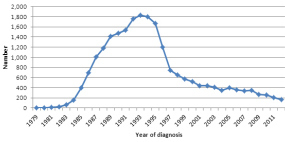 of a positive HIV test. This has been happening more and more lately.
of a positive HIV test. This has been happening more and more lately.
Left chart :Â AIDS cases in Canada peaked in 1992 and has been declining ever since to low levels. Courtesy of PHAC.
Number three, one quick way to determine if a medical test has problems is to ask if there are any lawsuits filed because of a false positive result. Yes, there have been many HIV test related law suits filed. Here are a few in the local papers:
Pregnant woman sues Memphis laboratory for $1 million for positive HIV test
August 28, 2012
Doctor sued over false positive HIV test Friday, Jan 22, 2010
HIV Misdiagnosis Lawsuit: Lexington Man Discovers He Never Had The Virus
False Positive HIV Tests Results Spur Illinois Medical Malpractice Lawsuit
April 9, 2011
There are many more ….See more at this Link.  ……….. and this link .
 The New Bus Ad – Let’s perform a “Make-Over” for the bus ad which now looks like this (see upper image). In my opinion, Glyphosate represents a greater threat to our community health than the imaginary HIV /AIDS epidemic which was predicted in 1990 and never actually materialized.
The New Bus Ad – Let’s perform a “Make-Over” for the bus ad which now looks like this (see upper image). In my opinion, Glyphosate represents a greater threat to our community health than the imaginary HIV /AIDS epidemic which was predicted in 1990 and never actually materialized.
Glyphosate is Greater Threat to Community Health
For example, here is a chart (below) showing increasing use of Glyphosate, Monsanto’s herbicide which has been linked to increasing incidence of Diabetes and 20 other diseases (see Genetically engineered crops Glyphosate Deterioration of Health_Nancy Swanson_2014.)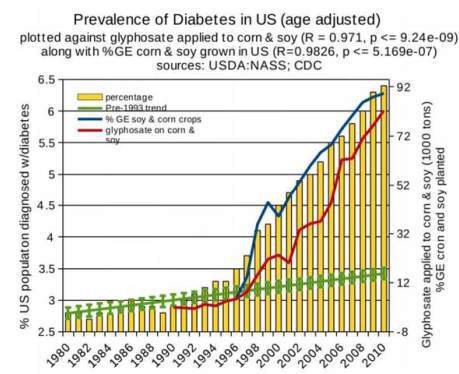
Glyphosate is in our environment and our food causing disease and toxicity n our population. So instead of asking for an HIV test, ask your doctor for a Glyphosate test. While you are at it, call your Congressman and ask for new legislation banning production and use of Glyphosate.
Jeffrey Dach MD
7450 Griffin Road Suite 180/190
Davie, Florida 33314
954-792-4663
Articles with related interest:
Berberine Antidote for a Modern Epidemic
Dr Oz Discusses Glyphosate as Carcinogen
References:
1) Genetically engineered crops Glyphosate Deterioration of Health_Nancy Swanson_2014
3) Glyphosate pathways to modern diseases Celiac Gluten Two Seneff 2013
4) Detection-of-glyphosate-in-malformed-piglets-Kruger_2014
5) SeneffGlyphosateYale2014-2-Elephant in the Room
7) Glyphosate Roundup Human Placental Cells Aromatase Seralini Richard 2005 Env Health Persp
8) Glyphosate suppresses the antagonistic effect of Enterococcus on Clostridia Kruger 2013
9) Effect Glyphosate Pathogens Poultry Microbiota In Vitro Krueger Shehata Curr Microbiol 2012
10) Roundup Glyphosate Converging Pattern of Toxicity Farm Clinic Eva Sirinathsinghj ISIS 2015
11) Goodson, Patricia. âQuestioning the HIV-AIDS Hypothesis: 30âYears of Dissent.â Frontiers in Public Health 2 (2014): 154. PMC. Web. 10 July 2015.
Jeffrey Dach MD
7450 Griffin Road Suite 190
Davie, Fl 33314
954-792-4663
www.jeffreydachmd.com
http://www.drdach.com
http://www.naturalmedicine101.com
http://www.truemedmd.com
Disclaimer click here: http://www.drdach.com/wst_page20.html
The reader is advised to discuss the comments on these pages with his/her personal physicians and to only act upon the advice of his/her personal physician. Also note that concerning an answer which appears as an electronically posted question, I am NOT creating a physician â patient relationship. Although identities will remain confidential as much as possible, as I can not control the media, I can not take responsibility for any breaches of confidentiality that may occur.
Copyright (c) 2015 Jeffrey Dach MD All Rights Reserved. This article may be reproduced on the internet without permission, provided there is a link to this page and proper credit is given.
FAIR USE NOTICE: This site contains copyrighted material the use of which has not always been specifically authorized by the copyright owner. We are making such material available in our efforts to advance understanding of issues of significance. We believe this constitutes a âfair useâ of any such copyrighted material as provided for in section 107 of the US Copyright Law. In accordance with Title 17 U.S.C. Section 107, the material on this site is distributed without profit to those who have expressed a prior interest in receiving the included information for research and educational purposes.
Serving Areas of: Hollywood, Aventura, Miami, Fort Lauderdale, Pembroke Pines, Miramar, Davie, Coral Springs, Cooper City, Sunshine Ranches, Hallandale, Surfside, Miami Beach, Sunny Isles, Normandy Isles, Coral Gables, Hialeah, Golden Beach ,Kendall,sunrise, coral springs, parkland,pompano, boca raton, palm beach, weston, dania beach, tamarac, oakland park, boynton beach, delray,lake worth,wellington,plantation.
The post Dont Ask For HIV Test, Ask For Glyphosate Test appeared first on Jeffrey Dach MD .
July 6, 2015
Tamoxifen for Low Testosterone in Males
 Tamoxifen for Low Testosterone in Males
Tamoxifen for Low Testosterone in Males
My previous article discussed the use of clomiphene for increasing testosterone in hypo-gonadal males. Clomiphene works as an estrogen receptor blocker in the hypothalamus, thus stimulating LH/FSH which then stimulate testicular testosterone production.
Tamoxifen
Another drug which similarly blocks estrogen receptors is Tamoxifen (tamoxiphen), commonly used in breast cancer survivors to block estrogen receptors.  Similar to the use of clomiphene, tamoxiphen has been used to treat low testosterone and low sperm counts (infertility) in males. (1-3)  Usual dosage is 10-20 mg tamoxifen per day for 6 to 9 months.(1-3)
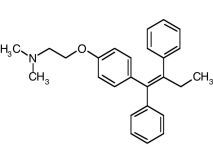 Left Image: tamoxifen chemical structure courtesy of wikimedia commons.
Left Image: tamoxifen chemical structure courtesy of wikimedia commons.
Reduction of Growth Hormone Levels by Tamoxifen
An unwanted effect of tamoxifen is 25% reduction in IGF-1 (growth hormone) levels.(5)Â Tamoxifen reduced peak Growth Hormone levels in mice by 60%.(6)
Ocular Toxicity
Adverse effects of tamoxifen relate to the ocular toxicity. Regular eye exams at the ophthalmology office every 6 months is advised (4)
Articles with related interest:
Clomid for Men with Low Testosterone Part One
Clomid For Men With Low Testosterone, Part Two
References
1) http://www.ncbi.nlm.nih.gov/pubmed/640052
Fertil Steril. 1978 Mar;29(3):320-7.
Hormonal effects of an antiestrogen, tamoxifen, in normal and oligospermic men. Vermeulen A, Comhaire F.
The administration of tamoxifen, 20 mg/day for 10 days, to normal males produced a moderate increase in luteinizing hormone (LH), follicle-stimulating hormone (FSH), testosterone, and estradiol levels, comparable to the effect of 150 mg of clomiphene citrate (Clomid). However, whereas Clomid produced a decrease in the LH response to LH-releasing hormone (LHRH), no such effect was seen after the administration of tamoxifen. In fact, prolonged treatment (6 weeks) with tamoxifen significantly increased the LH response to LHRL. Treatment of patients with “idiopathic” oligospermia for 6 to 9 months resulted in a significant increase in gonadotropin, testosterone, and estradiol levels. A significant increase in sperm density was observed only in subjects with oligospermia below 20 X 10(6)/ml and normal basal FSH levels. When basal FSH levels were increased or oligospermia was moderate (greater than 20 X 10(6)/ml); no effect on sperm density was seen. As sperm density increased, FSH levels decreased, suggesting an inhibin effect. Sperm motility was not improved by tamoxifen treatment. In five boys with delayed puberty, tamoxifen treatment appeared to activate the pituitary-gonadal axis and pubertal development.
2) http://www.ncbi.nlm.nih.gov/pubmed/18692782
Fertil Steril. 2009 Apr;91(4 Suppl):1427-30.
The effect of selective estrogen receptor modulator administration on the hypothalamic-pituitary-testicular axis in men with idiopathic oligozoospermia.
Tsourdi E1, Kourtis A, Farmakiotis D, Katsikis I, Salmas M, Panidis D.
This study evaluates, compares, and contrasts the effects of three selective estrogen receptor modulators (SERMs), namely, tamoxifen, toremifene, and raloxifene, on the hypothalamic-pituitary-testicular axis in 284 consecutive subfertile men with idiopathic oligozoospermia using three therapeutic protocols: [1] tamoxifen, 20 mg, once daily (n = 94); [2] toremifene, 60 mg, once daily (n = 99); and [3] raloxifene, 60 mg, once daily (n = 91). The antiestrogenic effects of SERMs at the hypothalamic level result in a statistically significant increase of gonadotropin levels, which is more marked for tamoxifen and toremifene compared with raloxifene.
3) Kadioglu, Teoman Cem. “Oral tamoxifen citrate treatment is more effective in normogonadotropic patients who have follicle-stimulating hormone levels within the lower half of normal.” International urology and nephrology 41.4 (2009): 773-776.
ABSTRACT To identify a subgroup of normogonadotropic men who may benefit relatively more from TC (tamoxifen citrate; a widely prescribed drug for male infertility) among those with FSH (follicle-stimulating hormone) values in the lower or higher halves of the normal range.
In this retrospective study, 120 normogonadotropic infertile men with idiopathic oligozoospermia were included. All patients received 20 mg TC daily as a single dose for 6 months, and semen analysis and hormone levels were analyzed after 6 months, with the values being compared with those before treatment.
The FSH, luteinizing hormone and testosterone levels were significantly increased after the use of oral TC 20 mg daily. The sperm counts of the patients in the lower initial FSH group had a significantly higher increase in sperm count and concentration compared to the relatively higher FSH group.
This study revealed that initial FSH values can be used as a marker to estimate the probability that a patient will benefit from oral TC therapy. Patients in the lower FSH group had statistically higher chances of having higher sperm counts after treatment, and it is rational to advise these patients to receive 6 months of oral TC therapy. However, before drawing firm conclusions from this retrospective study, these results should be confirmed with double-blind, placebo-controlled, randomized trials.
4) http://www.nature.com/eye/journal/v13/n6/abs/eye1999217a.html
Eye (1999) 13, 729â733; doi: 10.1038/eye.1999.217
Ocular toxicity in low-dose tamoxifen: A prospective study
Baha’N Noureddin1, Muhieddin Seoud2, Ziad Bashshur1, Ziad Salem2, Ali Shamseddin2 and Ali Khalil2    1Department of Ophthalmology, American University of Beirut, Beirut, Lebanon     2Department of Gynecologic, Oncology American University of Beirut, Beirut, Lebanon
Purpose To look at the incidence, symptomatology, course and reversibility of low-dose tamoxifen ocular toxicity.
Methods Sixty-five women with breast cancer, on tamoxifen oral therapy (20 mg/day), and a totally normal eye examination, were prospectively followed up. A full ophthalmic evaluation was done every 6 months, for a median of 30 months (range 4-79 months). Any sign of toxicity in the cornea, lens, retina or optic nerve was looked for, whether associated with a change in visual acuity or not.
Results Ocular toxicity was documented in 8 patients, giving an incidence of 12%. Seven patients had keratopathy in the form of subepithelial deposits, whorls and linear opacities. Three of these patients had a concurrent symptomatic bilateral pigmentary retinopathy that warranted discontinuation of therapy. One patient developed bilateral optic neuritis that left her with optic nerve pallor and a decrease in vision. The patients who had the toxicity had a significantly higher tamoxifen cumulative dose (p = 0.03), and were longer on treatment (p = 0.04), than the non-affected ones. The keratopathy changes were reversible upon discontinuation of the drug.
Conclusion Prompt reporting of symptoms and yearly ophthalmic examinations are mandatory in patients on tamoxifen to detect toxic effects while these are still reversible.
5)Birzniece, Vita, et al. “Neuroendocrine regulation of growth hormone and androgen axes by selective estrogen receptor modulators in healthy men.” The Journal of Clinical Endocrinology & Metabolism 95.12 (2010): 5443-5448.
6) Ickenstein, Ludger M., Susan L. Holsmer, and Stelvio M. Bandiera. “Tamoxifen alters hepatic cytochrome P450 enzyme expression and circulating growth hormone levels in intact male rats.” Pharmaceutical research 21.9 (2004): 1631-1636.
Jeffrey Dach MD
7450 Griffin Road Suite 190
Davie, Fl 33314
954-792-4663
www.jeffreydachmd.com
http://www.drdach.com
http://www.naturalmedicine101.com
http://www.truemedmd.com
Disclaimer click here: http://www.drdach.com/wst_page20.html
The reader is advised to discuss the comments on these pages with his/her personal physicians and to only act upon the advice of his/her personal physician. Also note that concerning an answer which appears as an electronically posted question, I am NOT creating a physician â patient relationship. Although identities will remain confidential as much as possible, as I can not control the media, I can not take responsibility for any breaches of confidentiality that may occur.
Copyright (c) 2015 Jeffrey Dach MD All Rights Reserved. This article may be reproduced on the internet without permission, provided there is a link to this page and proper credit is given.
FAIR USE NOTICE: This site contains copyrighted material the use of which has not always been specifically authorized by the copyright owner. We are making such material available in our efforts to advance understanding of issues of significance. We believe this constitutes a âfair useâ of any such copyrighted material as provided for in section 107 of the US Copyright Law. In accordance with Title 17 U.S.C. Section 107, the material on this site is distributed without profit to those who have expressed a prior interest in receiving the included information for research and educational purposes.
Serving Areas of: Hollywood, Aventura, Miami, Fort Lauderdale, Pembroke Pines, Miramar, Davie, Coral Springs, Cooper City, Sunshine Ranches, Hallandale, Surfside, Miami Beach, Sunny Isles, Normandy Isles, Coral Gables, Hialeah, Golden Beach ,Kendall,sunrise, coral springs, parkland,pompano, boca raton, palm beach, weston, dania beach, tamarac, oakland park, boynton beach, delray,lake worth,wellington,plantation.
The post Tamoxifen for Low Testosterone in Males appeared first on Jeffrey Dach MD .
June 26, 2015
Shingles Vaccine for Recurrent Herpes Simplex
 Shingles Vaccine for Recurrent Herpes Simplex
Shingles Vaccine for Recurrent Herpes Simplex
I have been following Linda for about seven years now, treating her for Hashimotos’ thyroiditis. Her thyroid function is good, and her antibodies have actually declined about 50% from her first panel. Linda takes acyclovir daily for many years now for recurrent attacks of oral-facial herpes simplex which can be quite debilitating.  I actually wrote an earlier article on natural treatments for herpes with her in mind. Last week she came in to the office for her annual followup visit and we were chatting. Linda said she was thinking of going for a Shingles vaccination. Perhaps it would help with the Herpes. I immediately jumped down poor Linda’s throat condemning the idea.
I must confess that I have been somewhat anti-vaccination lately, having read the Suzanne Humphries book, Dissolving Illusions: Disease, Vaccines, and The Forgotten History. So, I said that this is a bad idea, citing many harmful ingredients in vaccines, and lack of any studies showing efficacy.
After a few minutes I thought well, maybe somebody else has done a study and tried it? Why not look it up on Google Scholar, and see what we can find out? Up popped a 2012 study from a hospital in Paris France, Efficacy of antiVZV antiHSV3 vaccine HSV1 HSV2 recurrent herpes simplex Jacqueline Le Goaster 2012.
in this prospective study, the doctors actually gave shingles vaccine to 24 patients with recurrent facial herpes, in spite of their daily acyclovir. Another 25 patient serves as control. Remarkably, the shingles vaccine group had zero recurrence of herpes over 6 years of follow up, while the control group continued to have 4-5 outbreaks per year as before.
I turned to Linda and said I would have to change my opinion, as this actually looks pretty good. So, if you notice a piece of my hat missing, that’s where I had to take a large bite and “Eat My Hat”.
Jeffrey Dach MD
Article with related interest:
Herpes Simplex Natural Treatments
Links and References
1) Efficacy of antiVZV antiHSV3 vaccine HSV1 HSV2 recurrent herpes simplex Jacqueline Le Goaster 2012
Jeffrey Dach MD
7450 Griffin Road Suite 190
Davie, Fl 33314
954-792-4663
www.jeffreydachmd.com
http://www.drdach.com
http://www.naturalmedicine101.com
http://www.truemedmd.com
Disclaimer click here: http://www.drdach.com/wst_page20.html
The reader is advised to discuss the comments on these pages with his/her personal physicians and to only act upon the advice of his/her personal physician. Also note that concerning an answer which appears as an electronically posted question, I am NOT creating a physician â patient relationship. Although identities will remain confidential as much as possible, as I can not control the media, I can not take responsibility for any breaches of confidentiality that may occur.
Copyright (c) 2015 Jeffrey Dach MD All Rights Reserved. This article may be reproduced on the internet without permission, provided there is a link to this page and proper credit is given.
FAIR USE NOTICE: This site contains copyrighted material the use of which has not always been specifically authorized by the copyright owner. We are making such material available in our efforts to advance understanding of issues of significance. We believe this constitutes a âfair useâ of any such copyrighted material as provided for in section 107 of the US Copyright Law. In accordance with Title 17 U.S.C. Section 107, the material on this site is distributed without profit to those who have expressed a prior interest in receiving the included information for research and educational purposes.
Serving Areas of: Hollywood, Aventura, Miami, Fort Lauderdale, Pembroke Pines, Miramar, Davie, Coral Springs, Cooper City, Sunshine Ranches, Hallandale, Surfside, Miami Beach, Sunny Isles, Normandy Isles, Coral Gables, Hialeah, Golden Beach ,Kendall,sunrise, coral springs, parkland,pompano, boca raton, palm beach, weston, dania beach, tamarac, oakland park, boynton beach, delray,lake worth,wellington,plantation.
The post Shingles Vaccine for Recurrent Herpes Simplex appeared first on Jeffrey Dach MD .
Jeffrey Dach's Blog
- Jeffrey Dach's profile
- 3 followers


